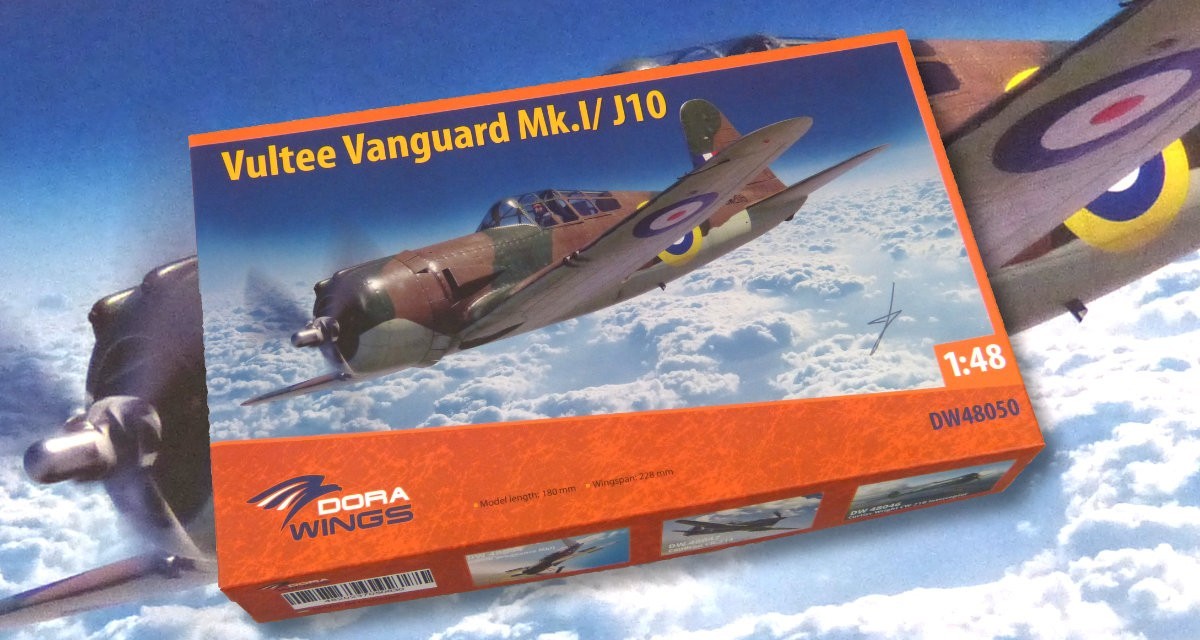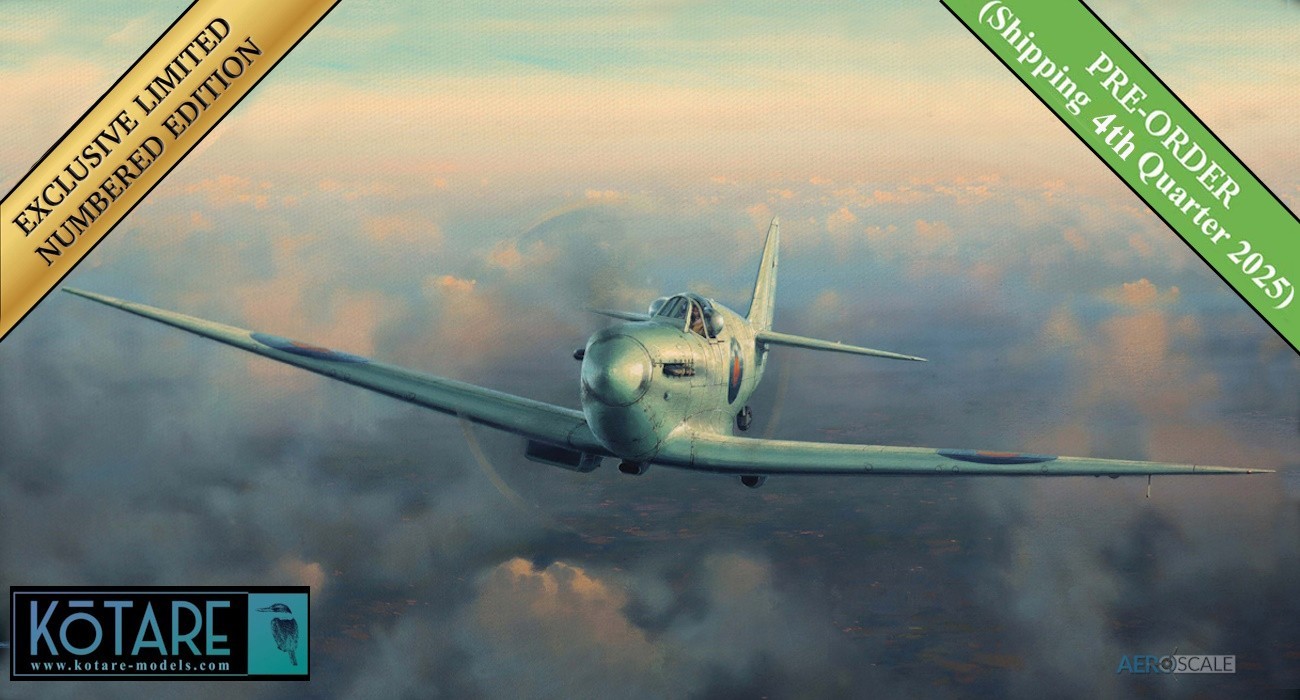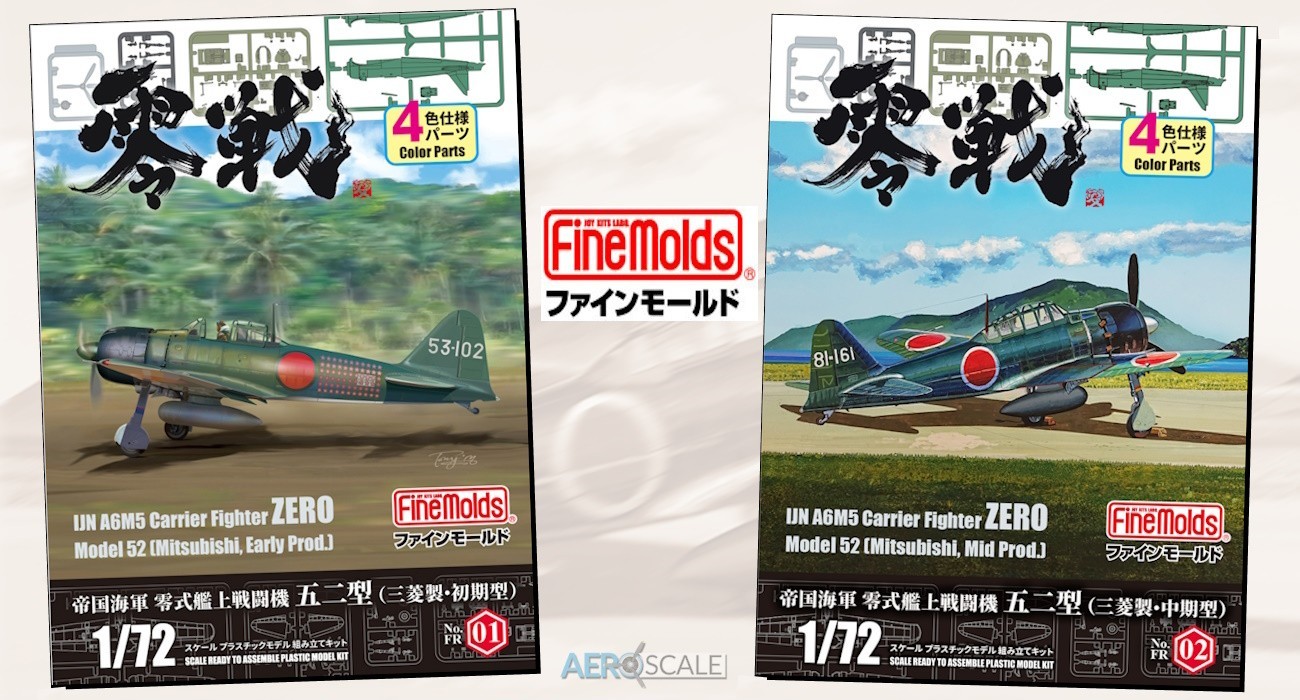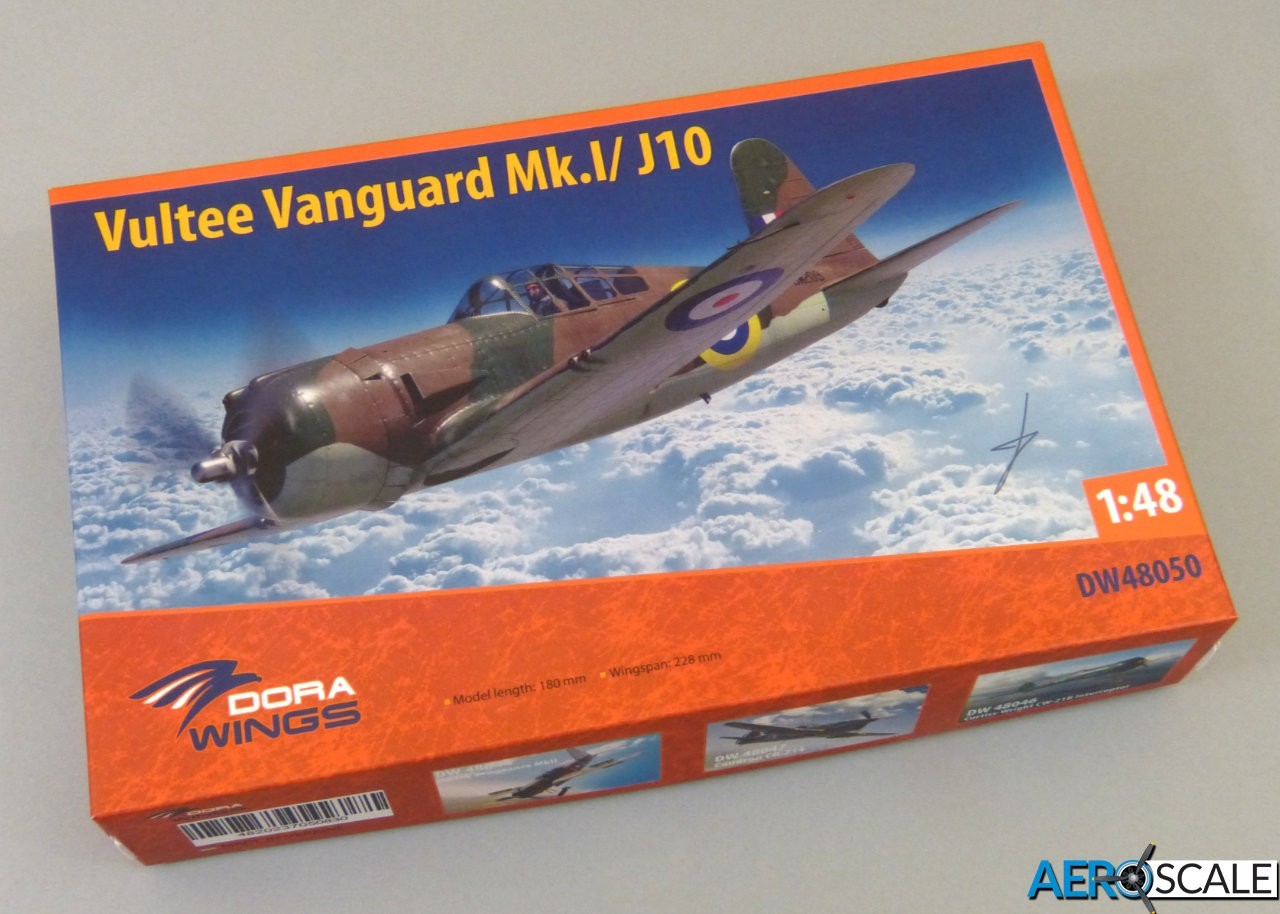
Background
The Vultee Vanguard is a wonderful subject for modellers seeking something a little different from standard WWII fighters. It's a classic example of the state of US aircraft design as war clouds loomed over Europe and the scramble began to re-equip air forces with modern designs after years of neglect and complacency.
Early fighting in Europe was soon to show that the Vanguard - a decent enough aircraft - had already been overtaken by events by the time it was available. Not deeming it suitable for combat, the RAF considered it as an advanced fighter trainer, only to reject it following trials (in retrospect, it looks almost ideal for making a useful contribution to the Empire Training Scheme, allowing pilots to cut their teeth on a modern low-wing fighter with a radial engine, a retractable landing gear and a respectable performance for the time), and the US government further stymied any chance of success for Vultee by placing an embargo on exporting the aircraft to Sweden who had ordered 144 aircraft as the J-10.
Following Pearl Harbour, Vanguards were pressed into US service as the P-66 in defensive and training roles where it acquired a mixed reputation. The Vanguard finally got the chance to see combat in China in late 1942, by which time it was clearly outclassed by Japanese fighters and soon began to be replaced by P-40s.
The Kit
Dora Wings' Vanguard arrives in a compact and attractive top-opening box, with the parts, accessories and instructions tightly packed in a plastic bag. The sample kit was further protected with a layer of bubble-wrap - I don't know if this is standard for models sold in shops, or just how Dora Wings pack things for mail order. Either way. everything arrived totally intact.

The kit comprises:
120 x pale olive styrene parts
10 x clear styrene parts
25 x etched brass parts
A sheet of vinyl painting masks
Decals for 4 x colour schemes
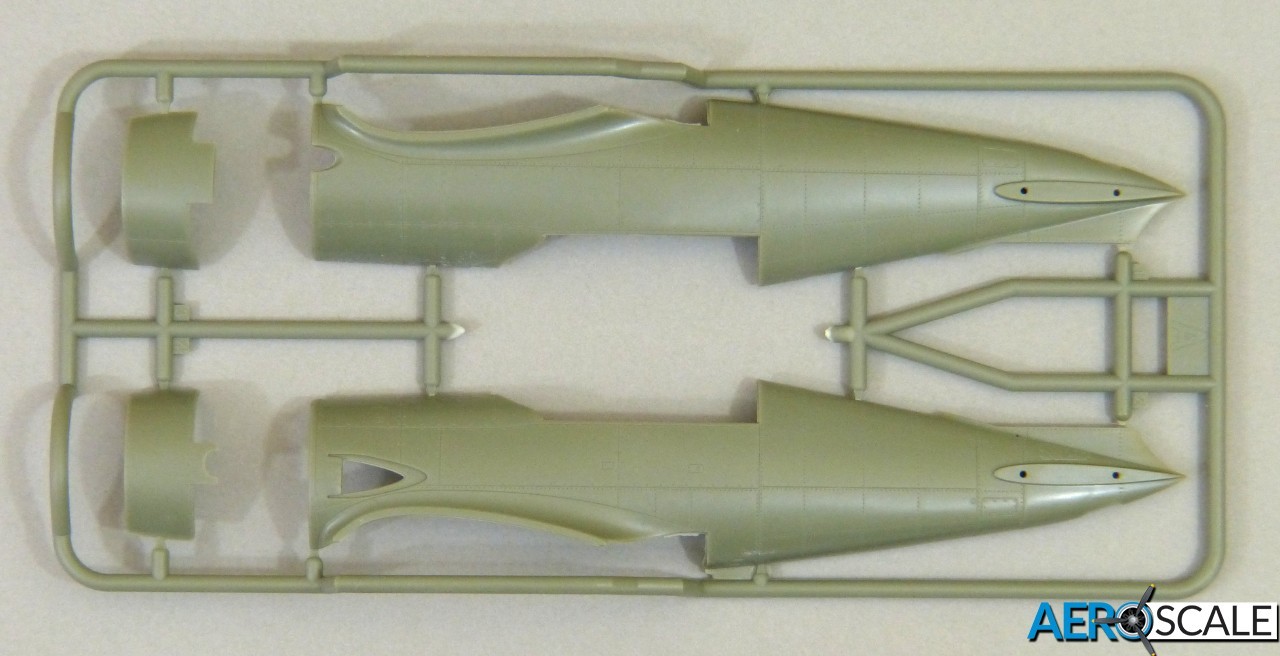

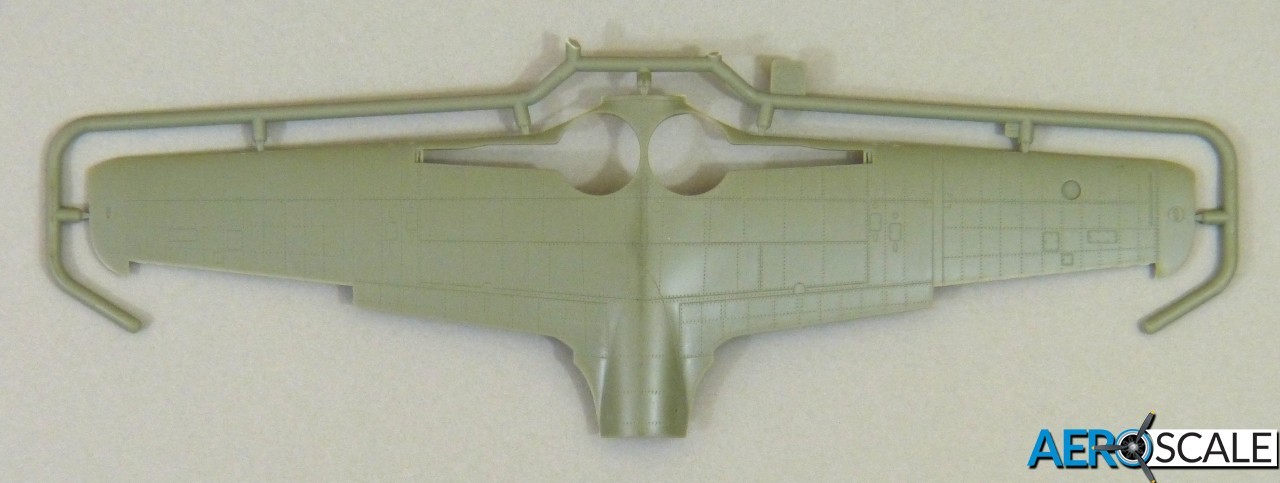


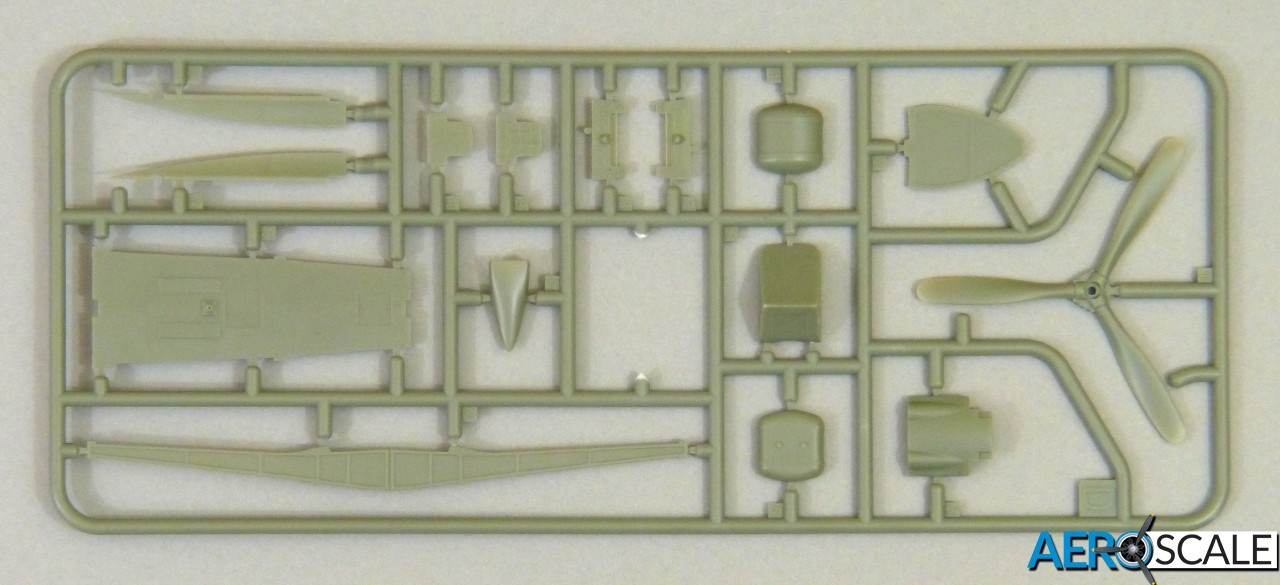
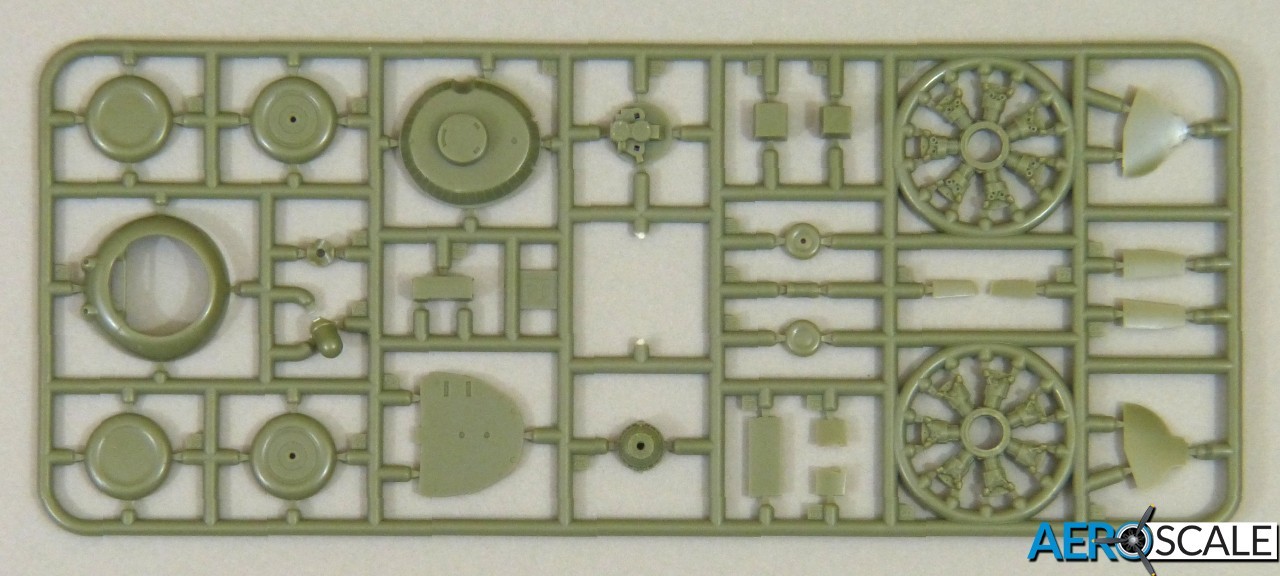
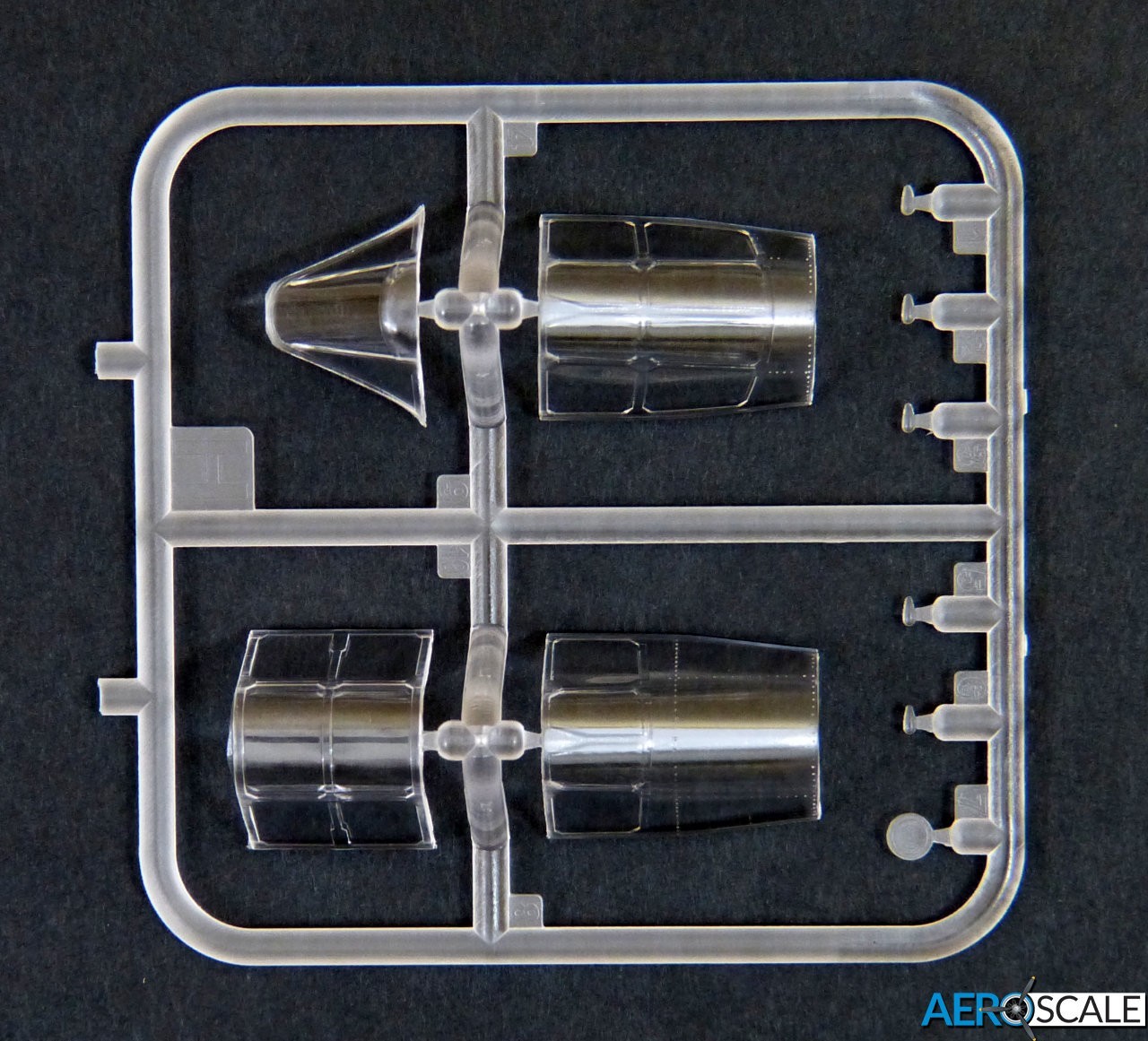
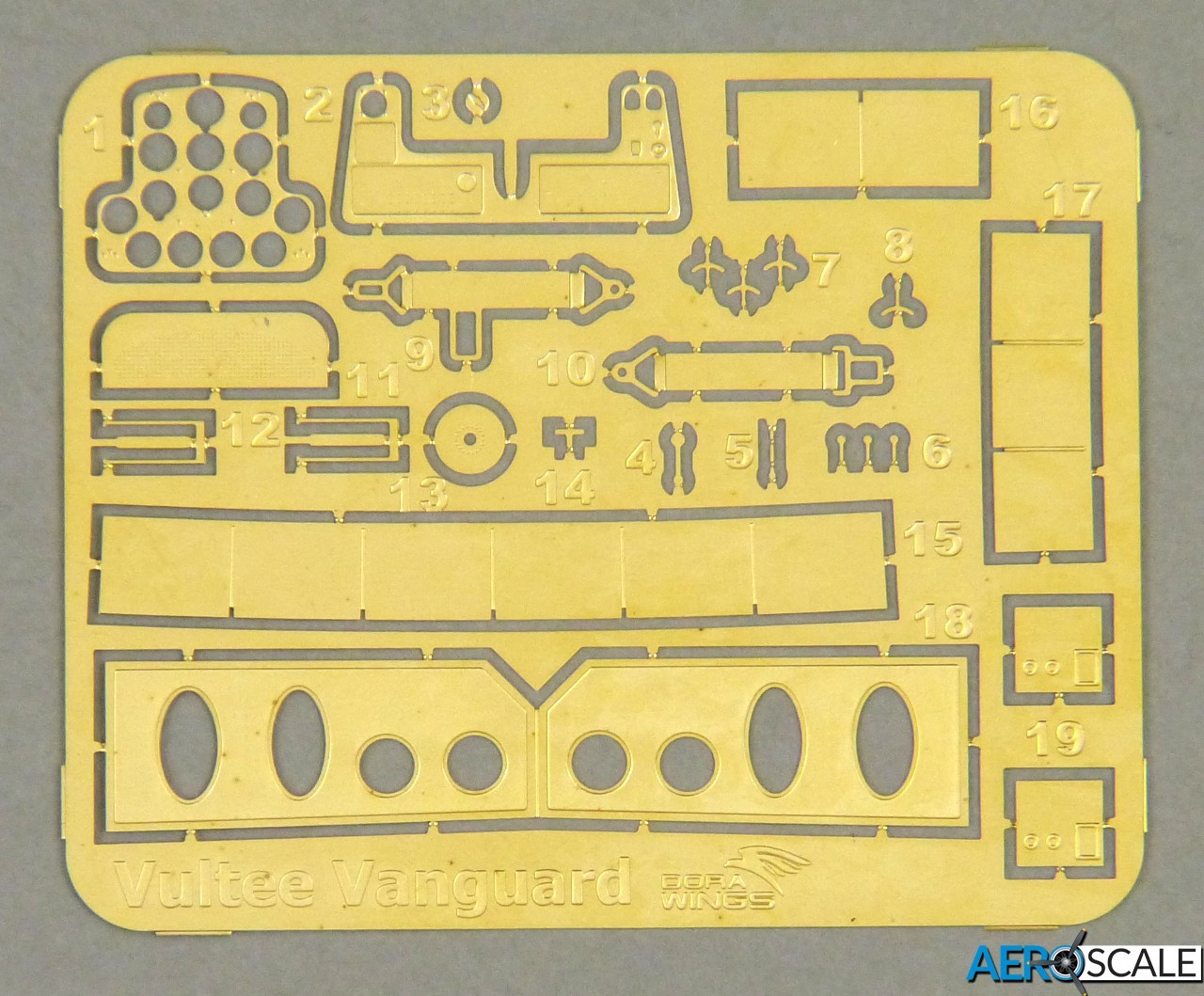
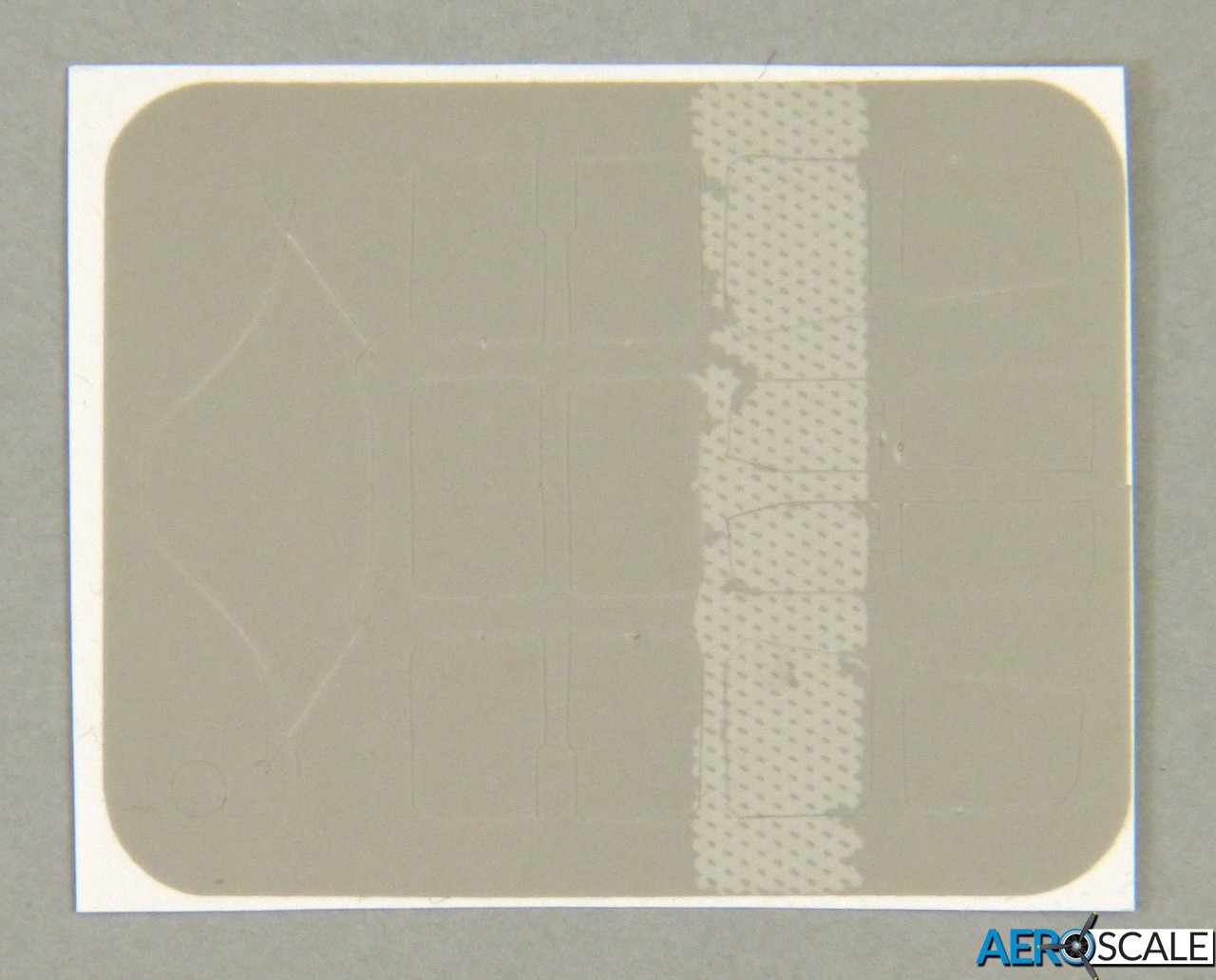
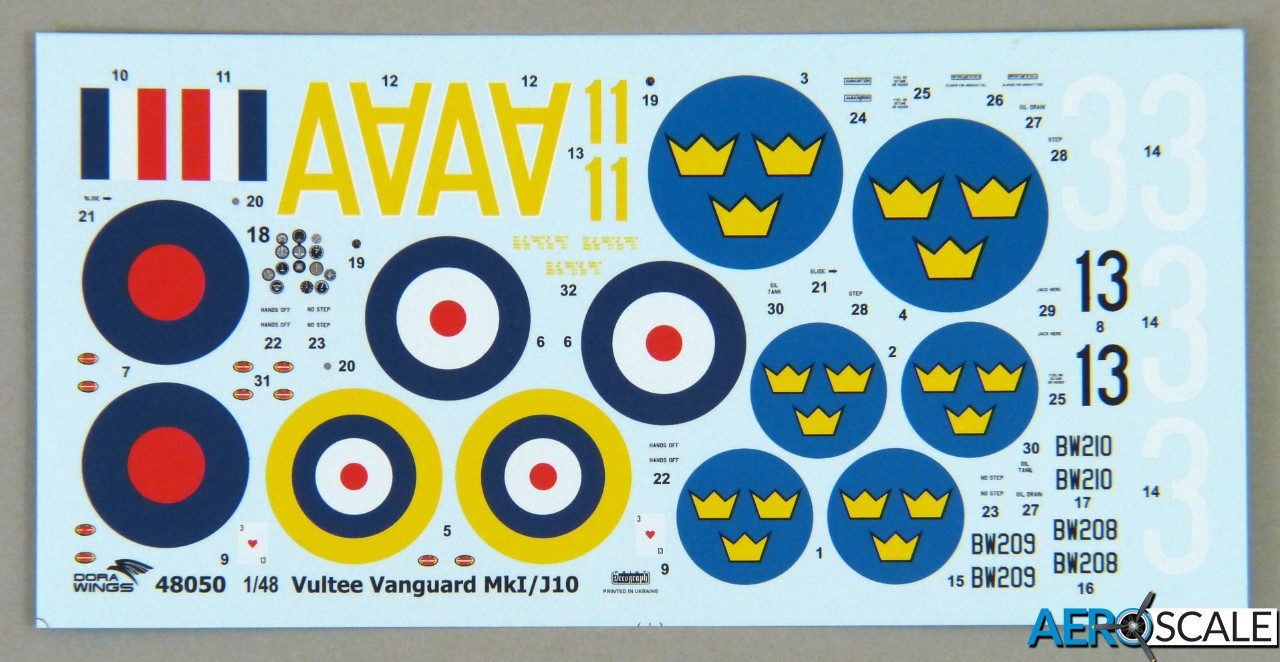
The first thing you notice when you examine the cleanly moulded parts is the exceptional surface finish on the metal areas of the airframe. Dora Wings have rivalled Eduard in the way the depict rivets and fasteners - it's wonderfully subtle and should look fantastic under a coat of paint.
The next thing that's apparent is the complete absence of any ejector-pin marks on the parts. This has become something of a trademark feature in how Dora Wings mould their kits, and I wish other manufacturers could emulate it.
Fabric surfaces are depicted with simple ribs to give a correctly taught look. The parts breakdown means something of a compromise here, though, because Dora Wings mould the trailing edges of the flying and control surfaces solid to make them realistically thin. That's great, but it means there's a seam to fill inboard of the trailing edge. This is a bit awkward when it runs through ribs, but experienced modellers should have no trouble hiding the seams.
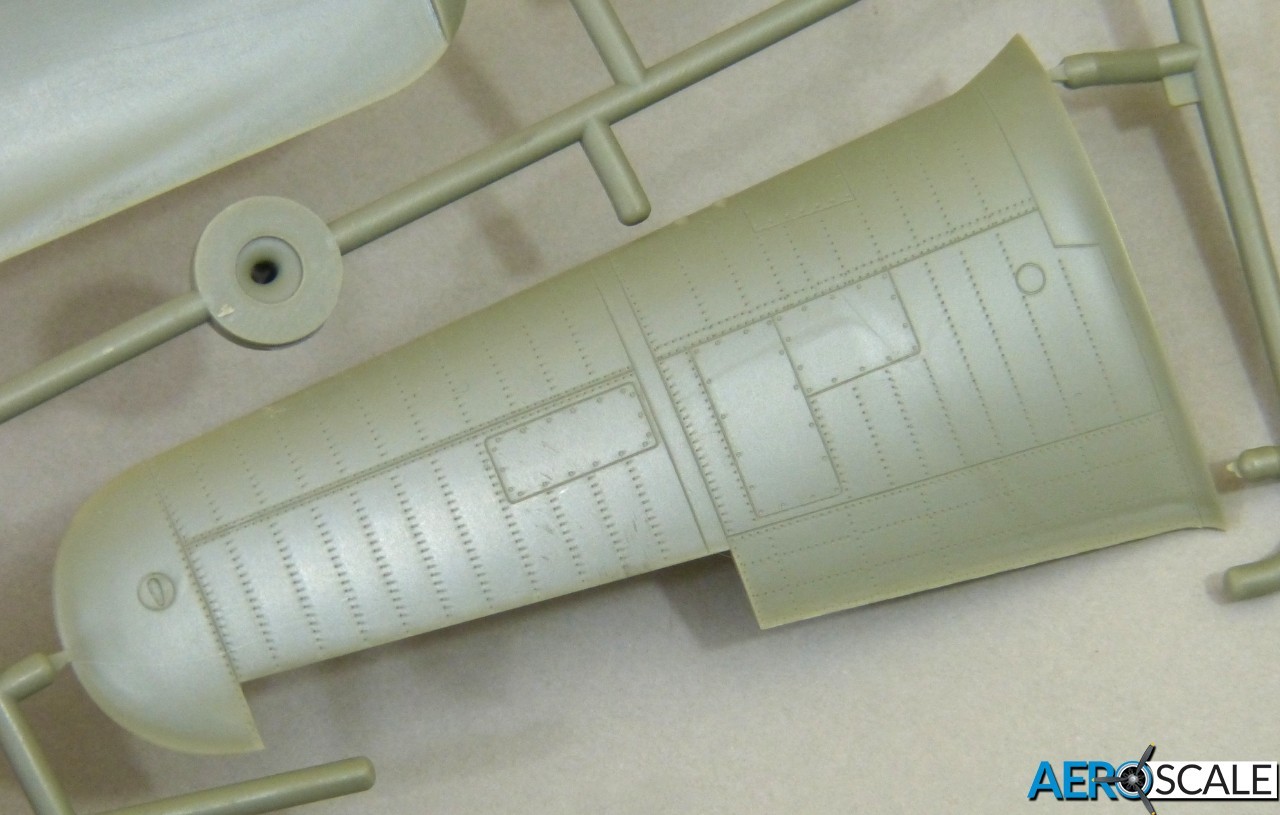
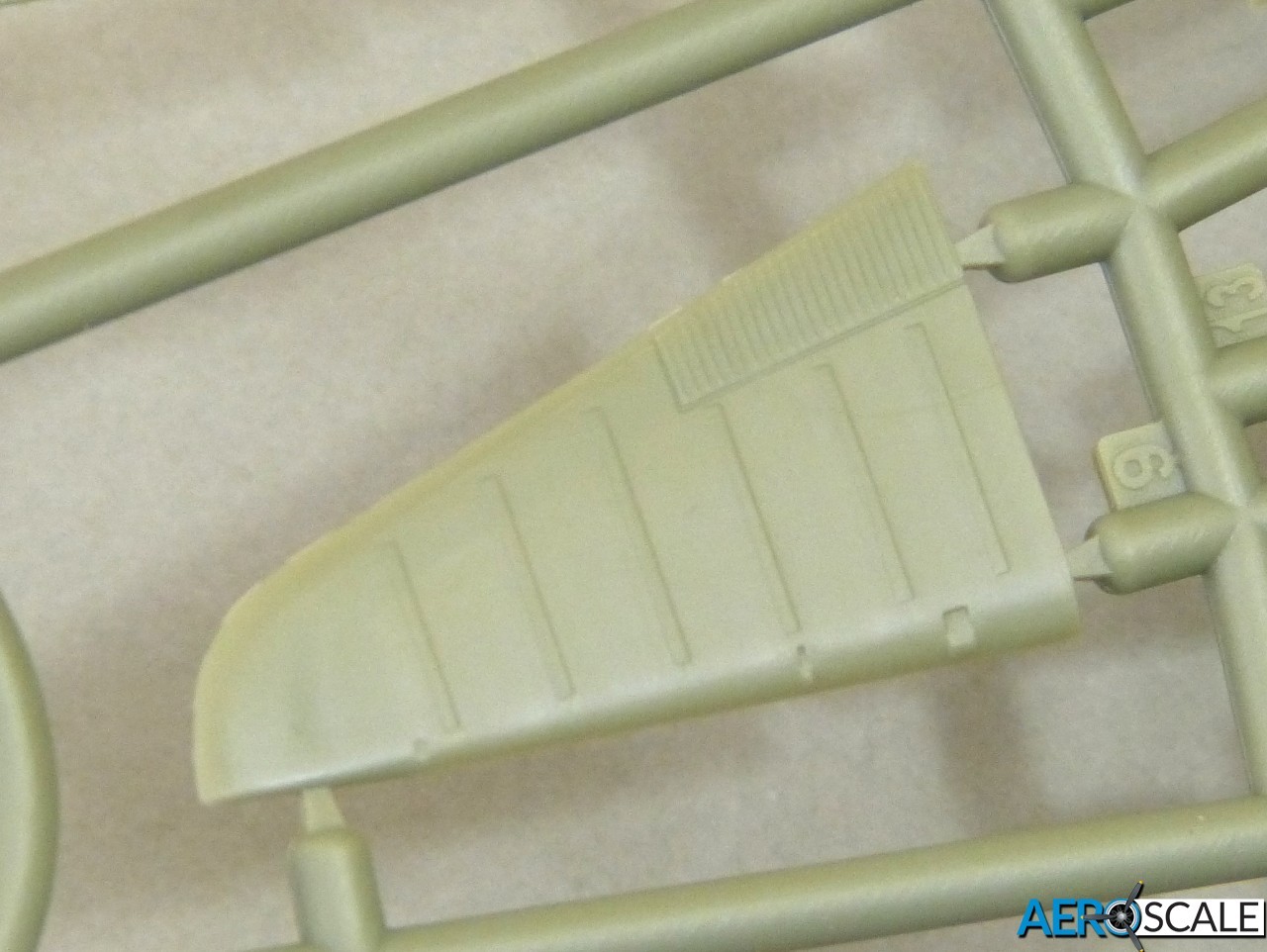

Test Fit
A quick dry assembly of the main parts is very encouraging. The fuselage halves line up perfectly, as do the wing panels. There's some complex geometry at the wing roots, and they'll need careful assembly to get the best result. There's a seem across the trailing rear of each wing fillet - again to keep the trailing edges sharp - and this will need filling and sanding to remove it.
The tail surfaces are separate, so be sure to get everything square before the cement cures. All the control surfaces are separate too, giving scope to add a bit of "life" to the finished model by deflecting them.
Overall, the basic construction looks very sound, but it might challenge total beginners. Anyone with a bit of experience - particularly with short-run models - should have no trouble, though.
A Few Details
Construction kicks off conventionally with the cockpit, and Dora Wings provide everything you need for a nicely busy "office", with construction occupying 4 pages of the instruction booklet. Overall, you're look at over 50 parts. The brass fret is put to good use with an etched instrument panel and seat harness, plus a number of switches and levers dotted around the cockpit. In fact there's a nicely moulded styrene instrument panel if you prefer, but I'll go for the etched version which is designed to sit over a crisply printed decal of the instrument faces.
The cockpit subassembly features delicate side frames and roll bar, and extends forward to include the firewall with engine bearers and what I assume is the oil tank. The latter area will be hidden on the finished model, but it's neat to know it's all there if you decide to open up the access panels for a servicing scene. What will be visible are a neatly moulded pair of .50 calibre gun butts either side of the instrument panel.
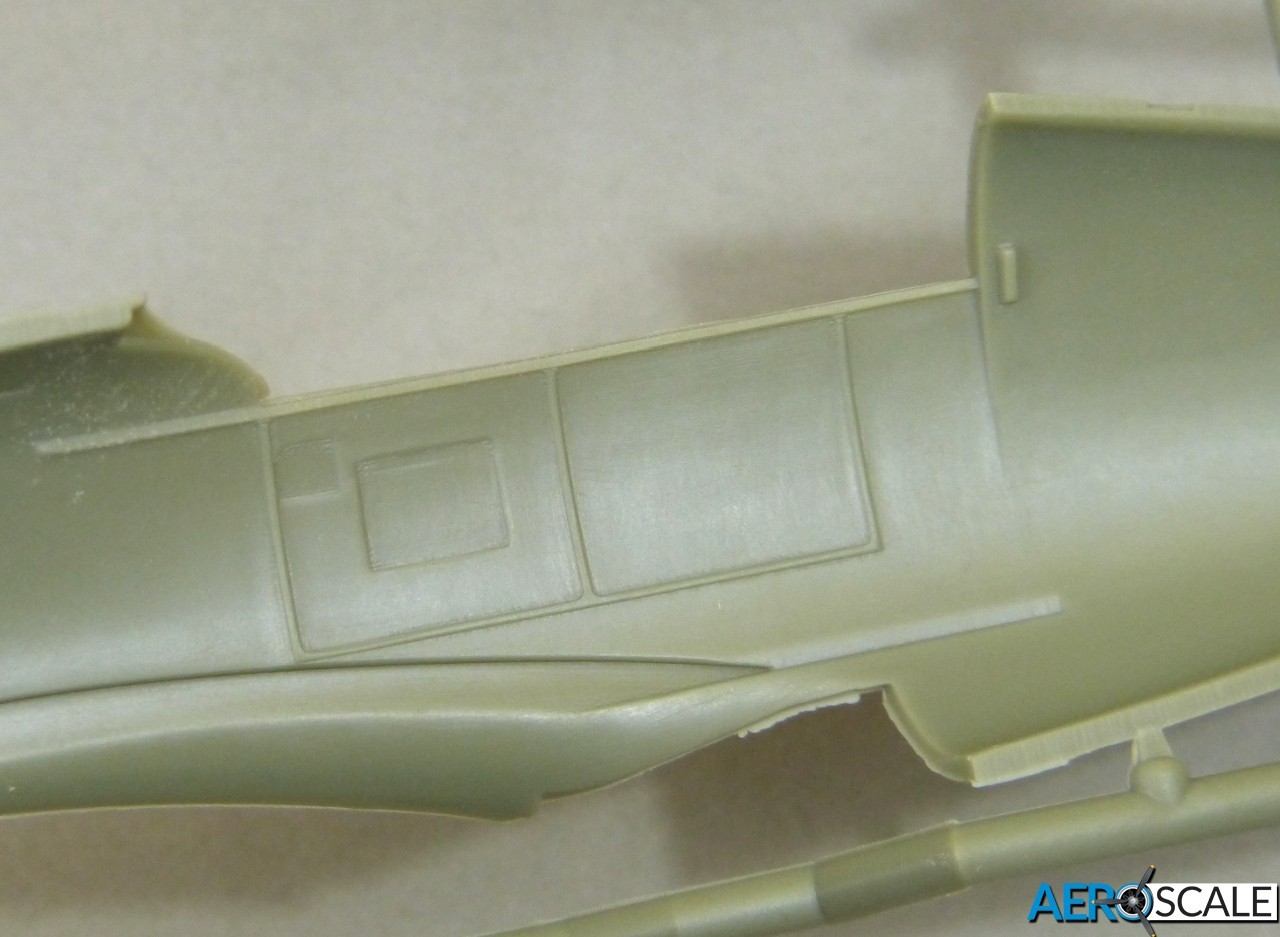

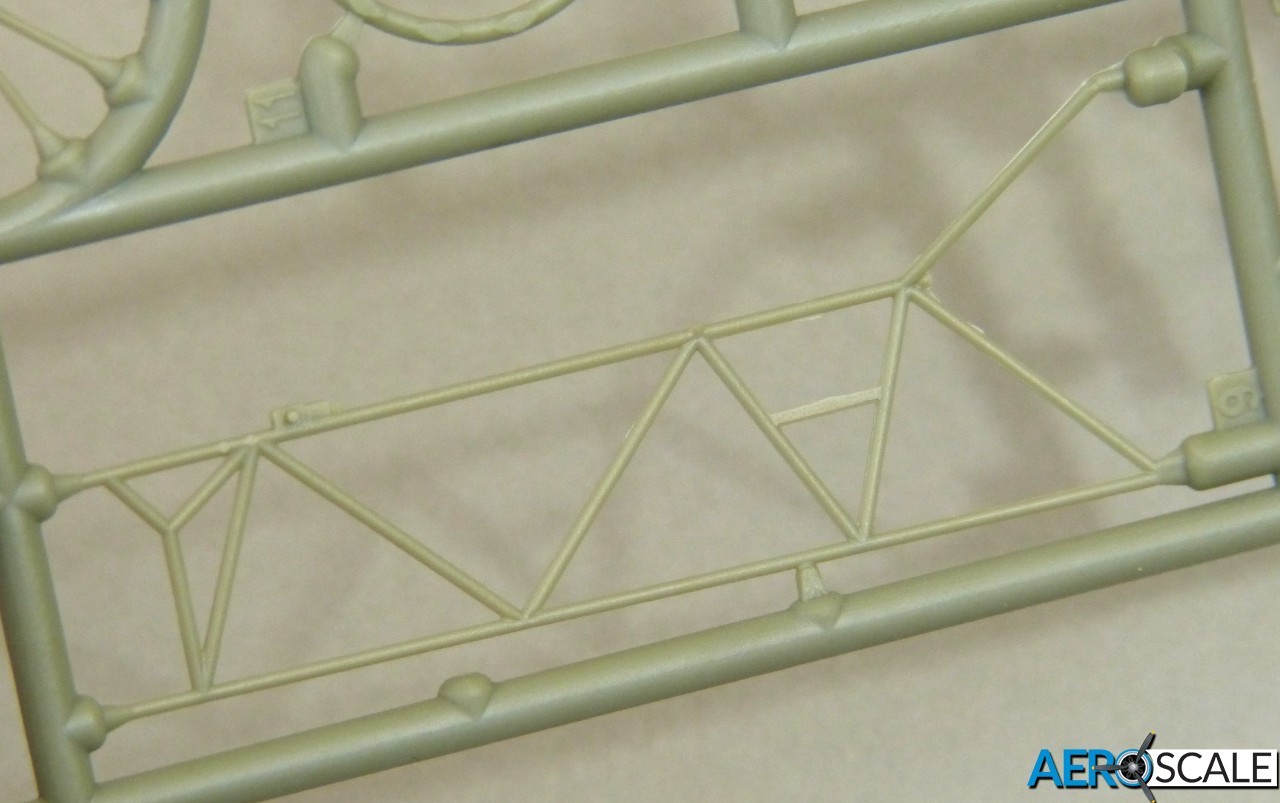
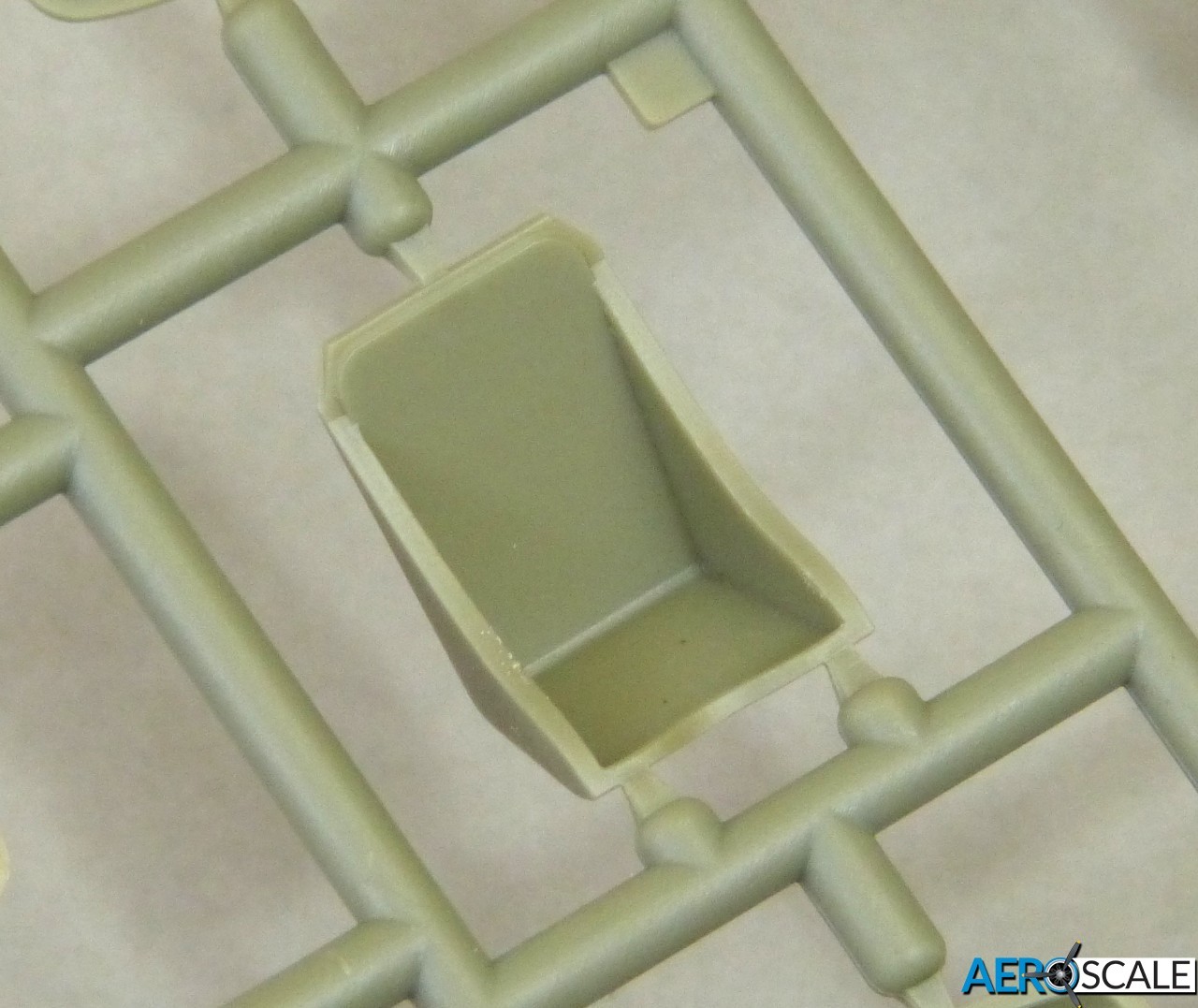


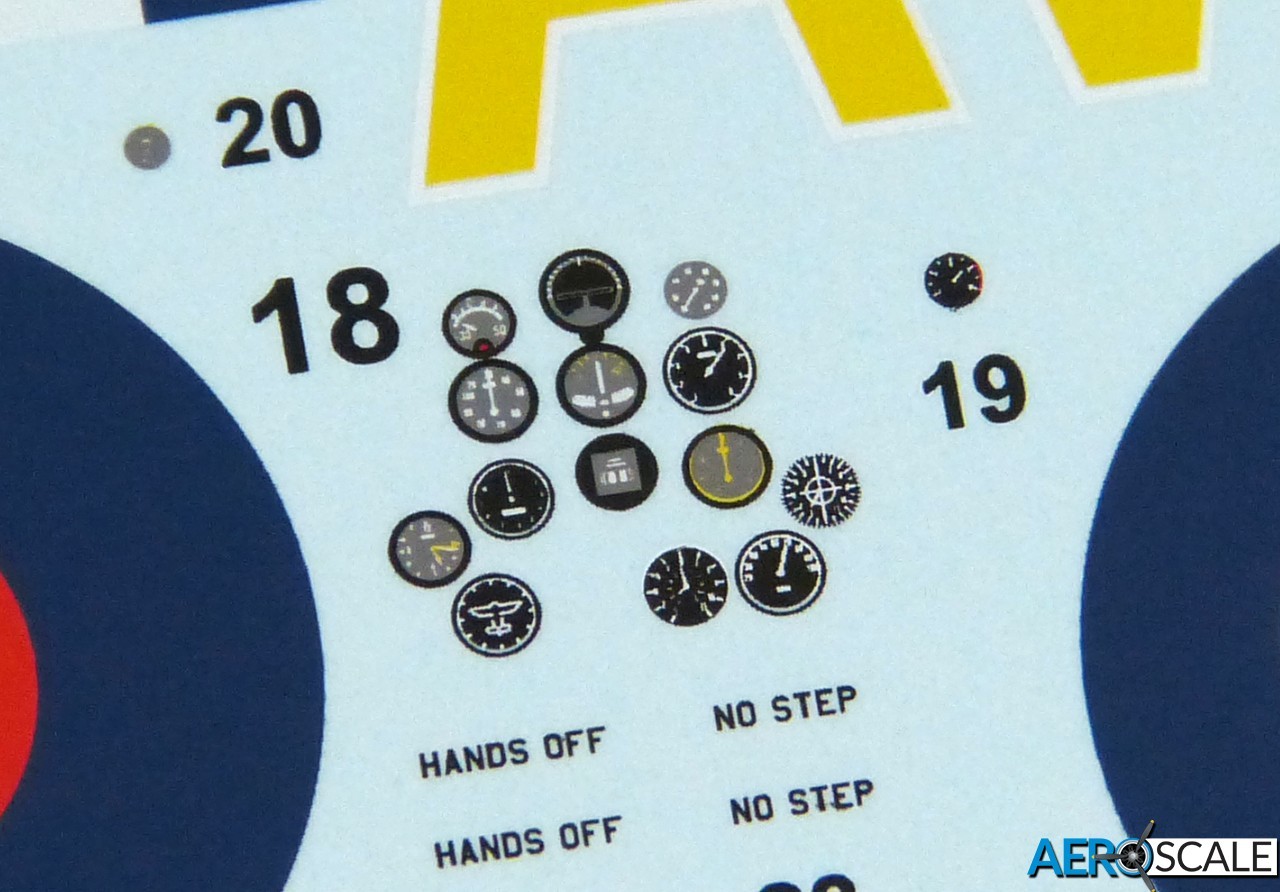
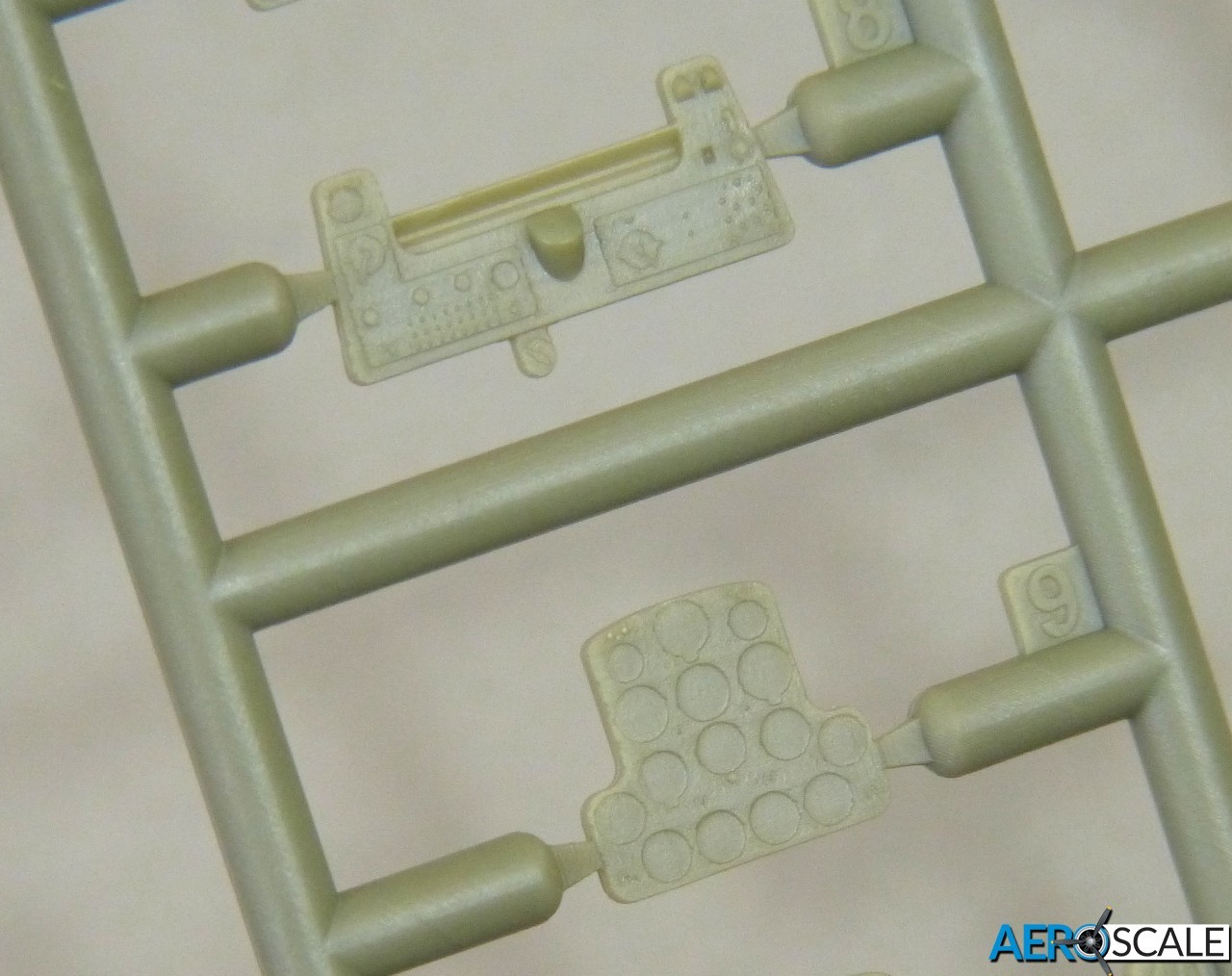
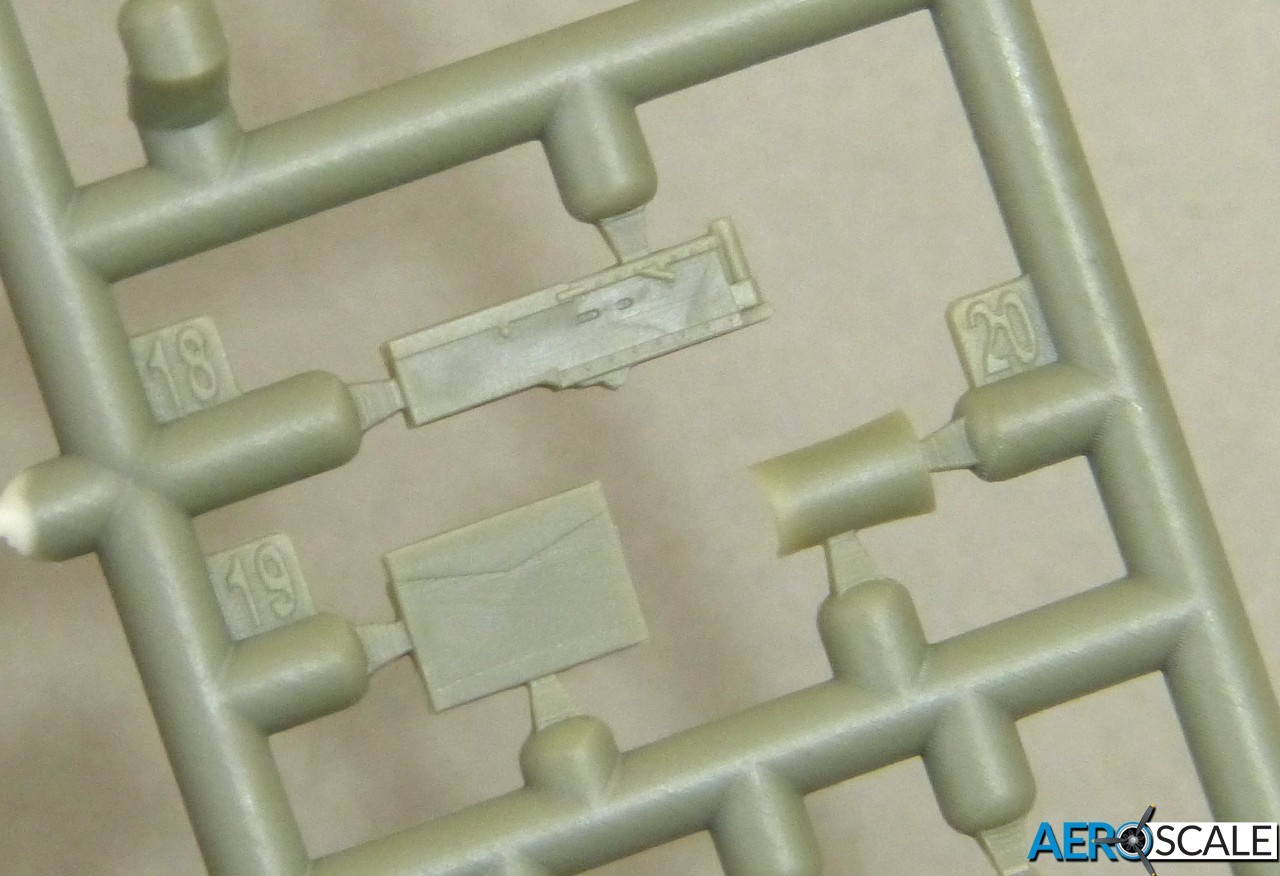
After the complexity of the cockpit, the wings are a straightforward assembly and Dora Wings include a spar which forms the rear of the wheel well. An interesting touch is the "keel" running across the centre of the well - this is etched brass folded double. I've never seen it done this way before in a kit, but it should work very neatly.

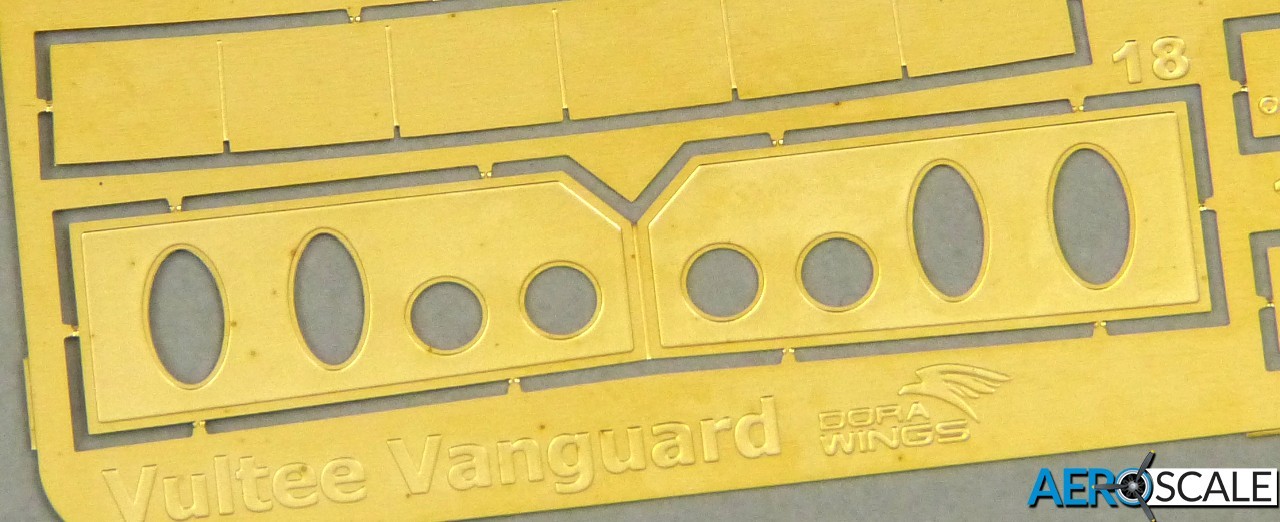
The Pratt & Whitney R-1830-33 engine is handled nicely and comprises some 20 parts. The engine's rear accessories are included and, again, these won't be visible on most finished models, but few of us can resist putting time into such details when they're offered. All in all, the engine should look a real gem with the addition of ignition wiring.
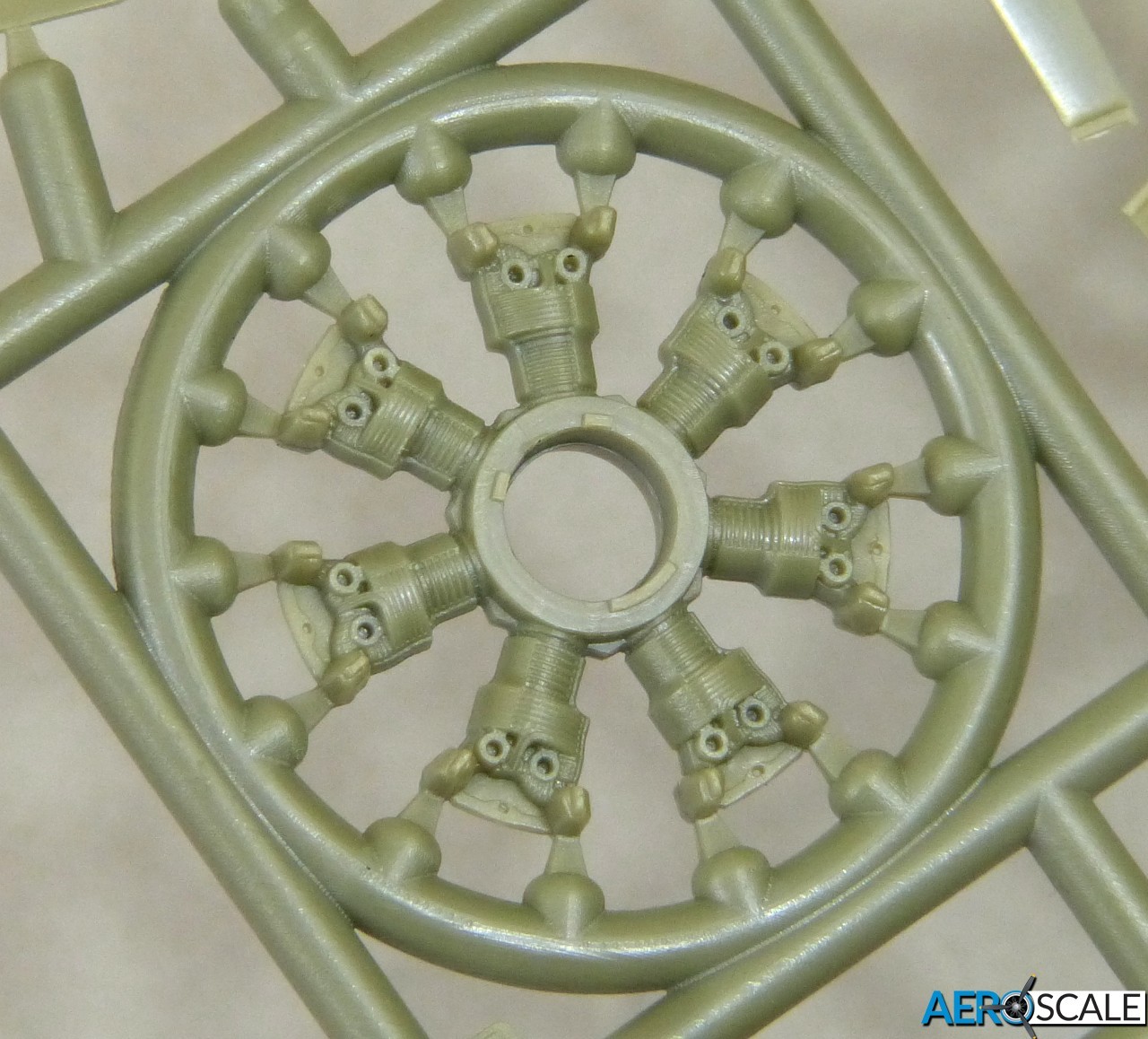

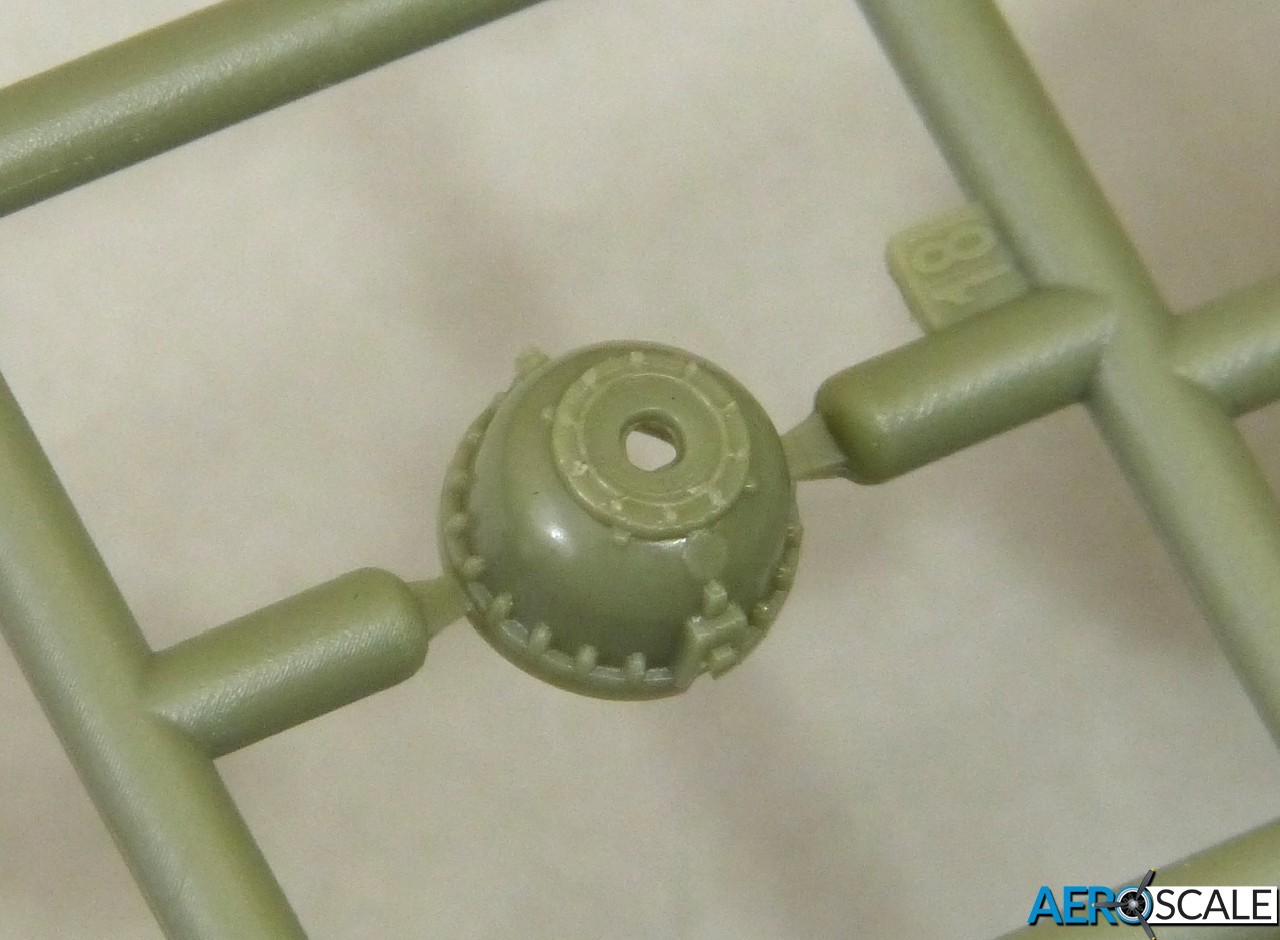
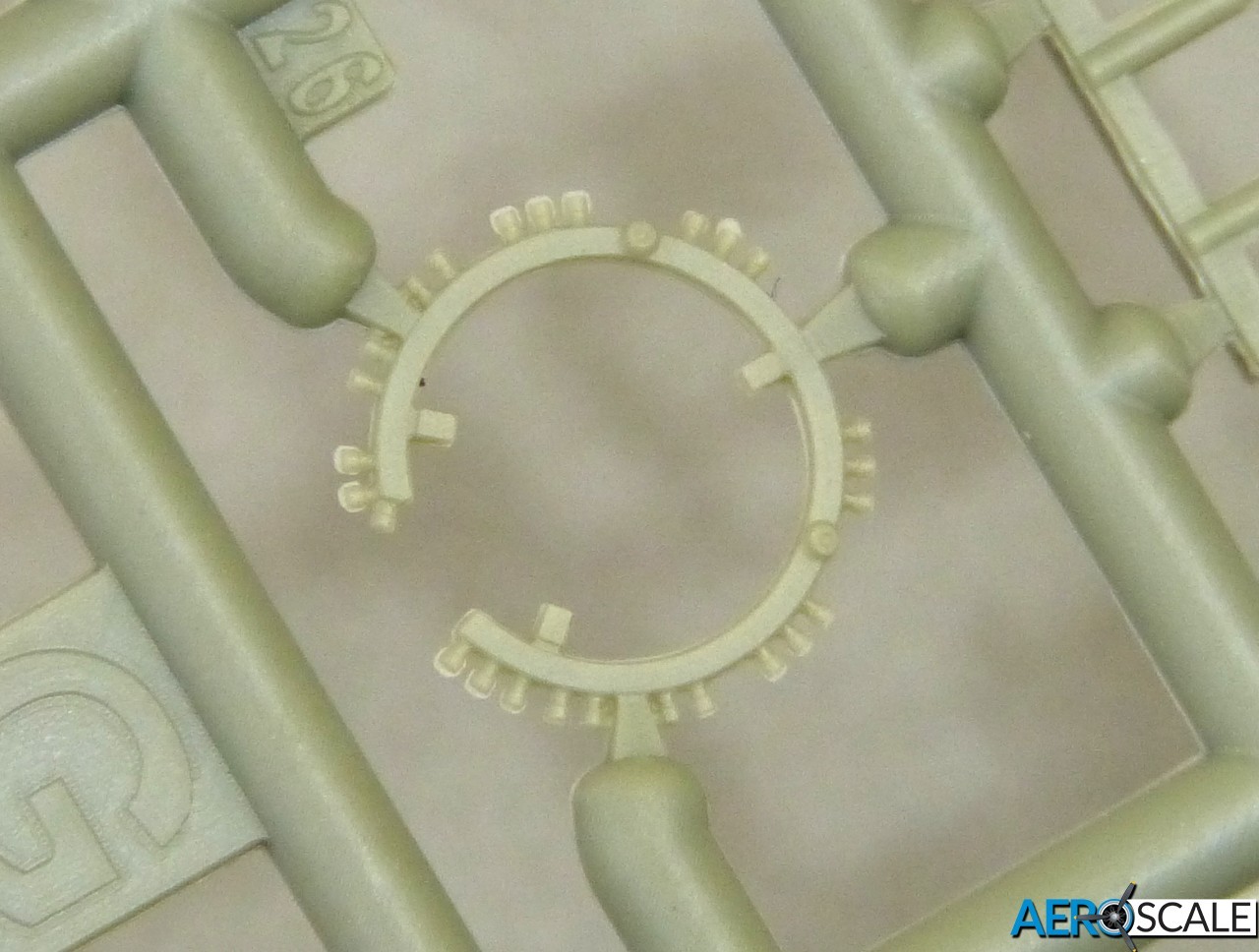
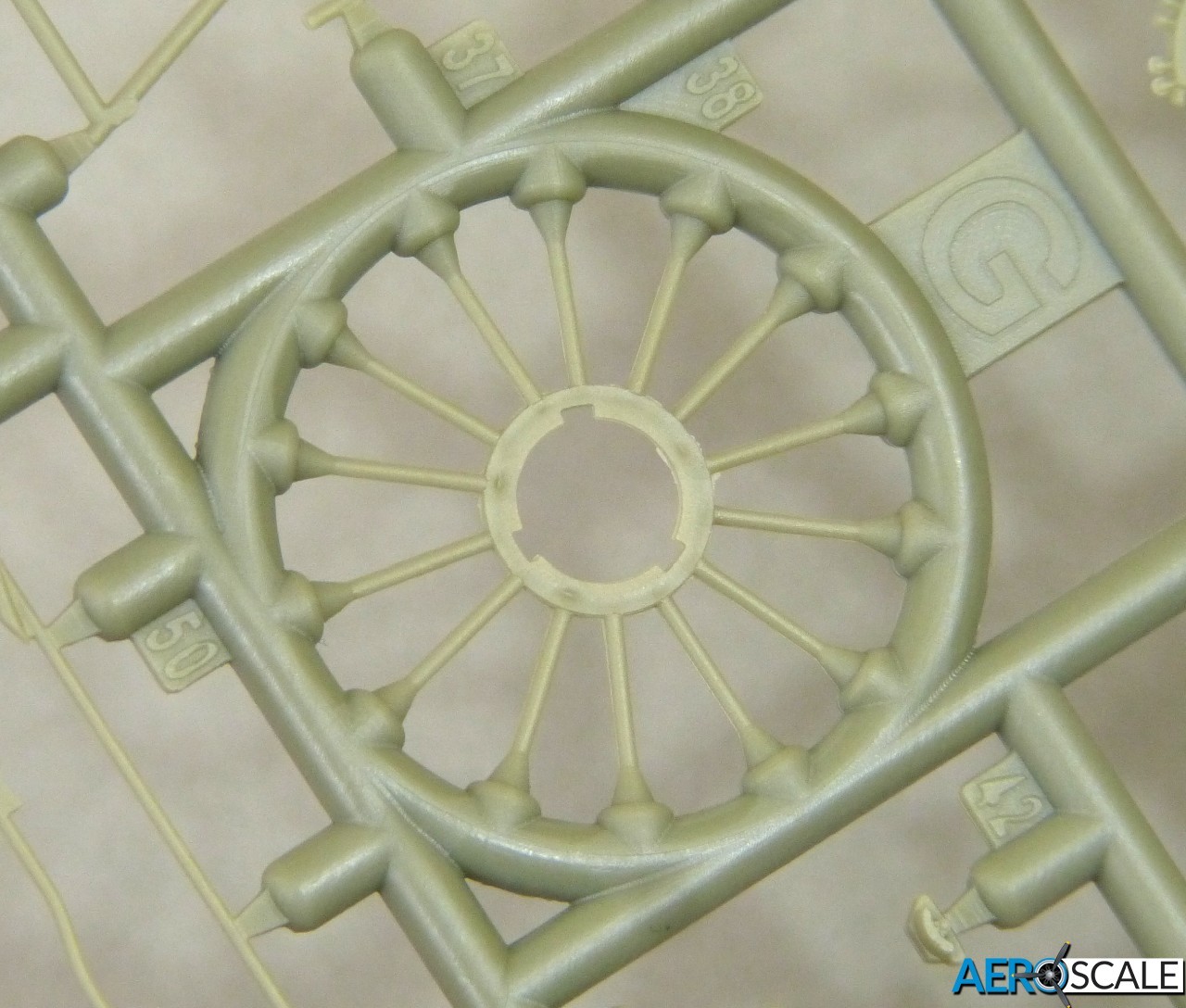

The cowling is built from 4 parts and looks straightforward. A bit more challenging for less experienced modellers, though, are the cooling gills. These are supplied as brass pieces which need to be rolled to shape. The payoff will be realistically thin edges.
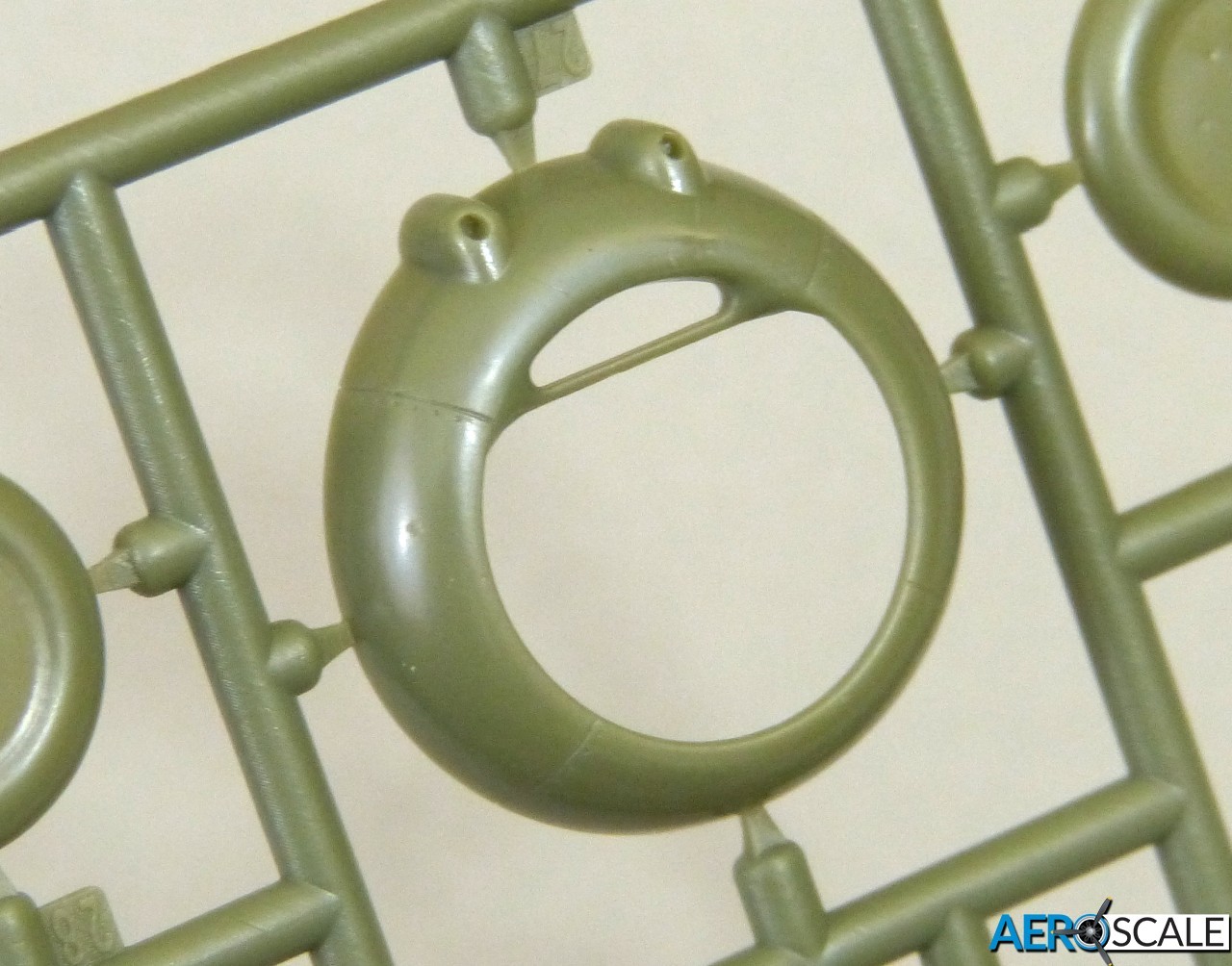
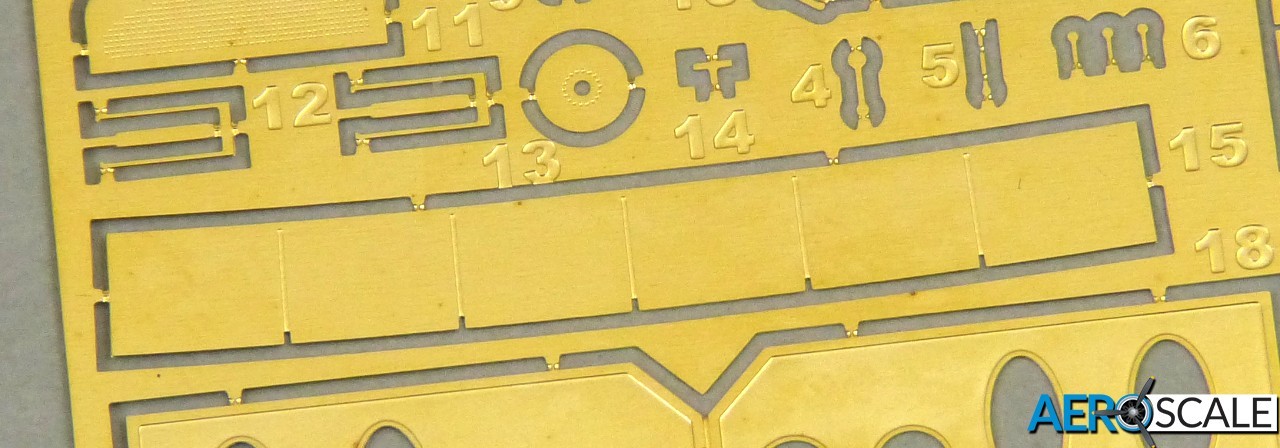
The propeller is supplied as a single unit, so there's no worry about setting the pitch for the blades. Add the hub and backplate and the job's done.
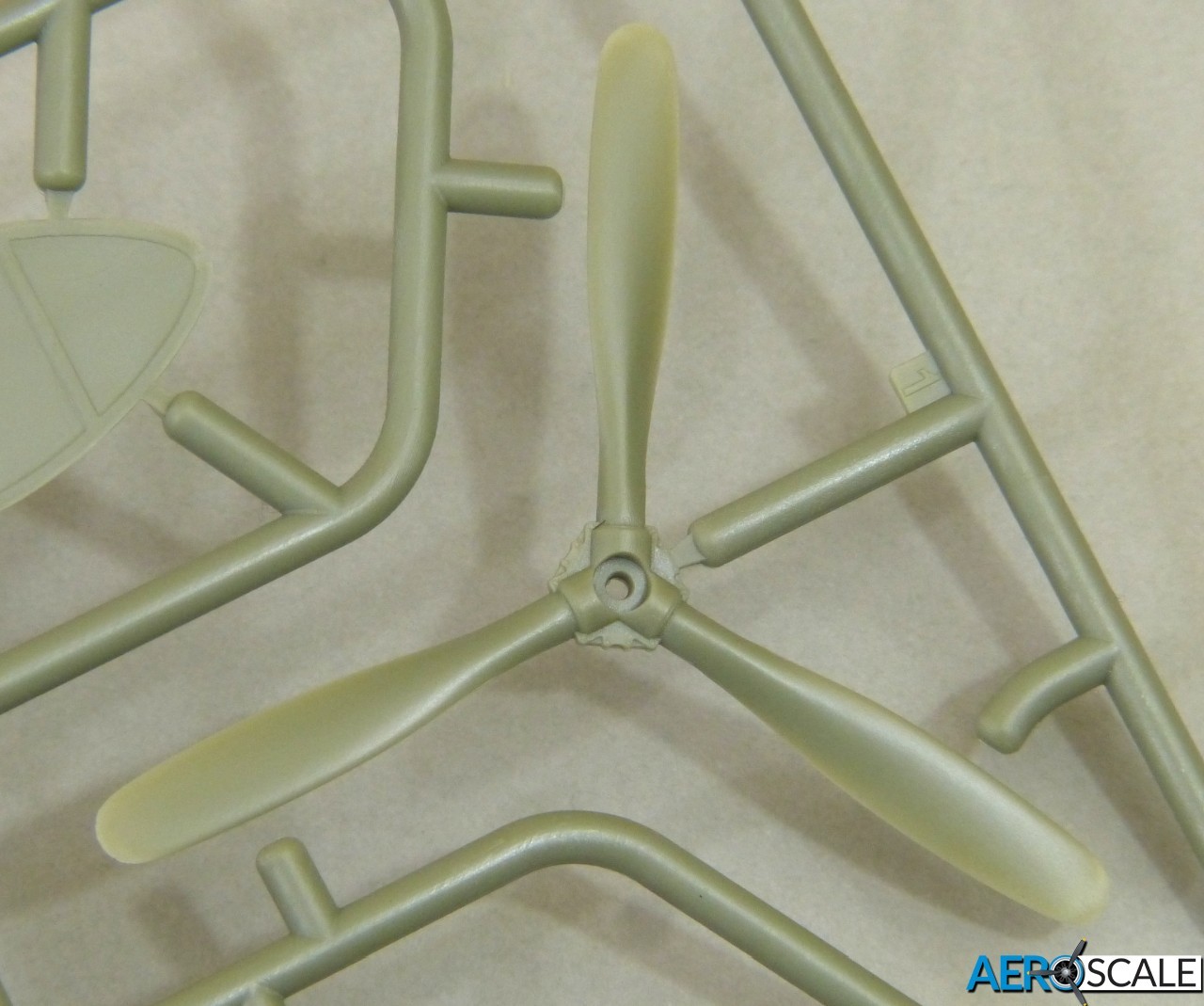
The undercarriage is nicely detailed, with cleanly moulded legs and wheels. The tailwheel is separate from its leg, making painting easier, and the main gear features separate oleo scissors. The tyres are un-weighted, so I'll file slight "flats" to give a realistic sit for the finished model.
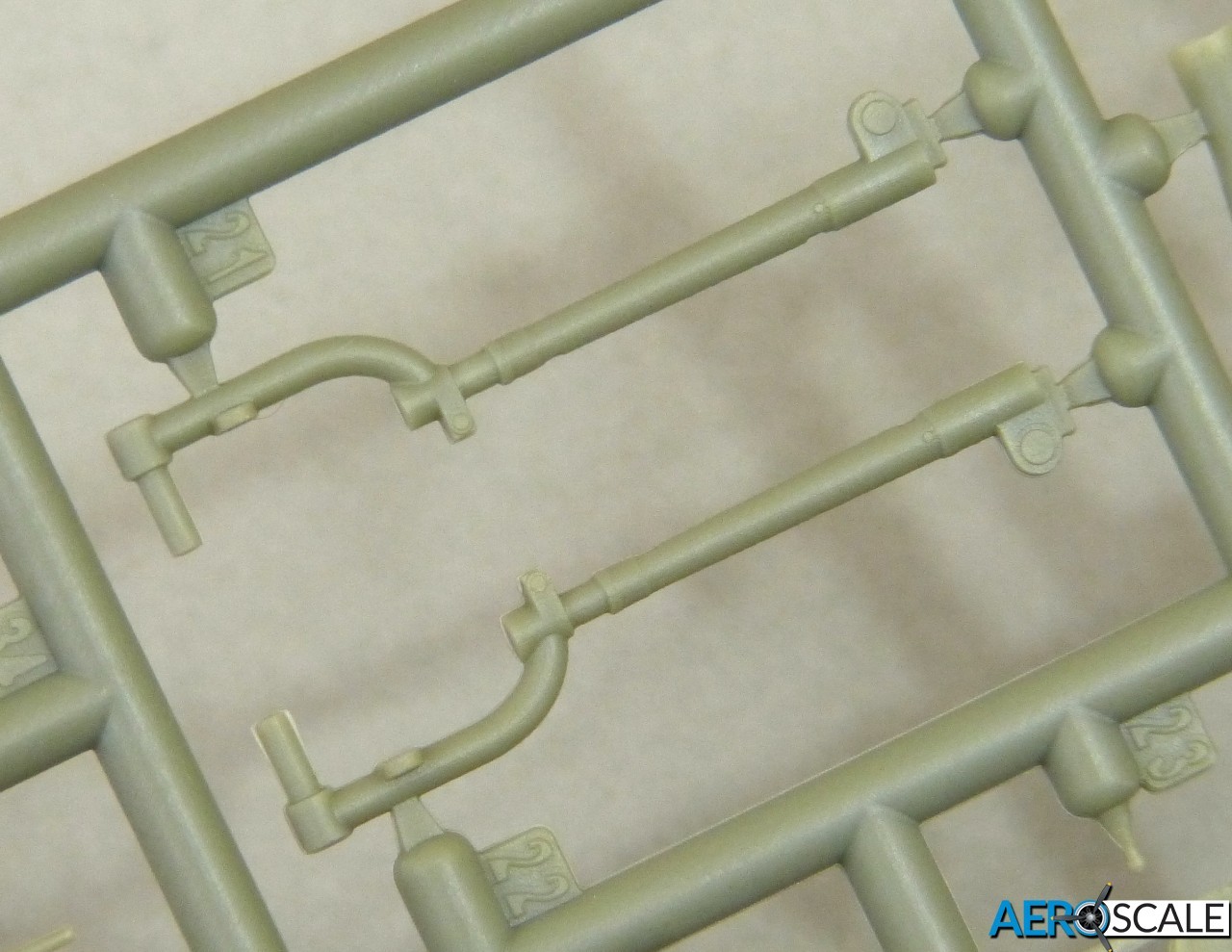
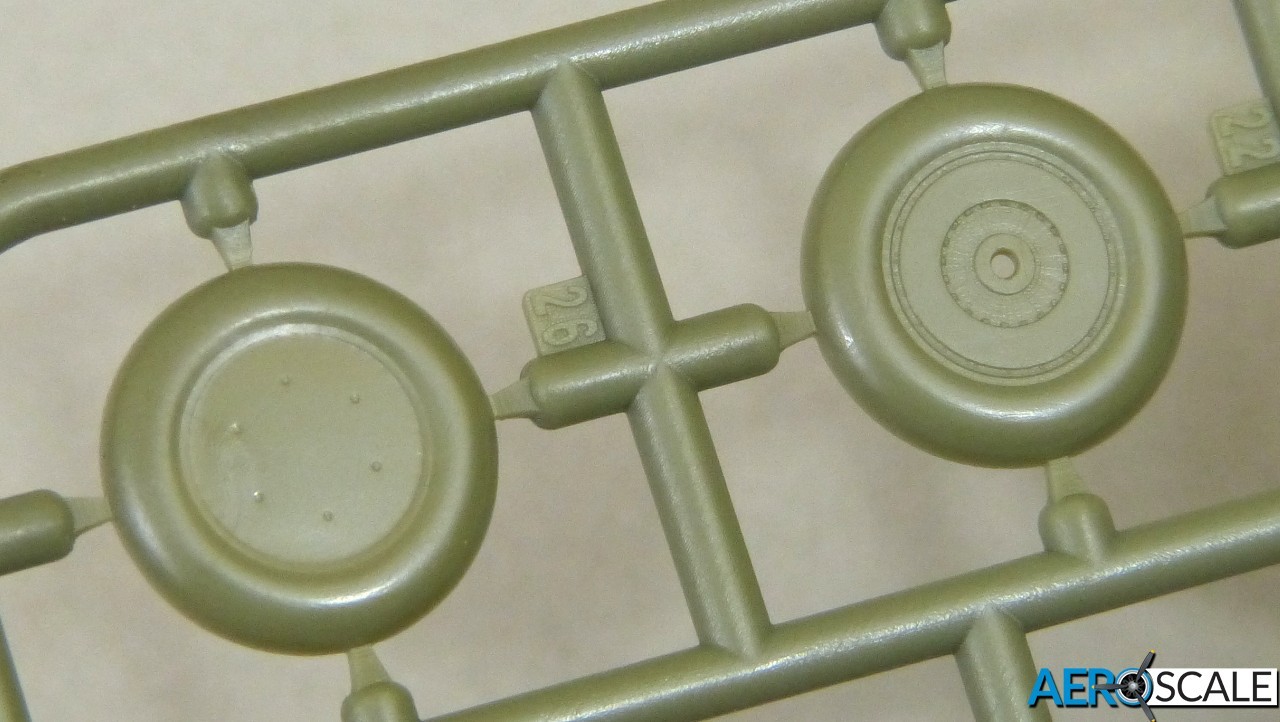
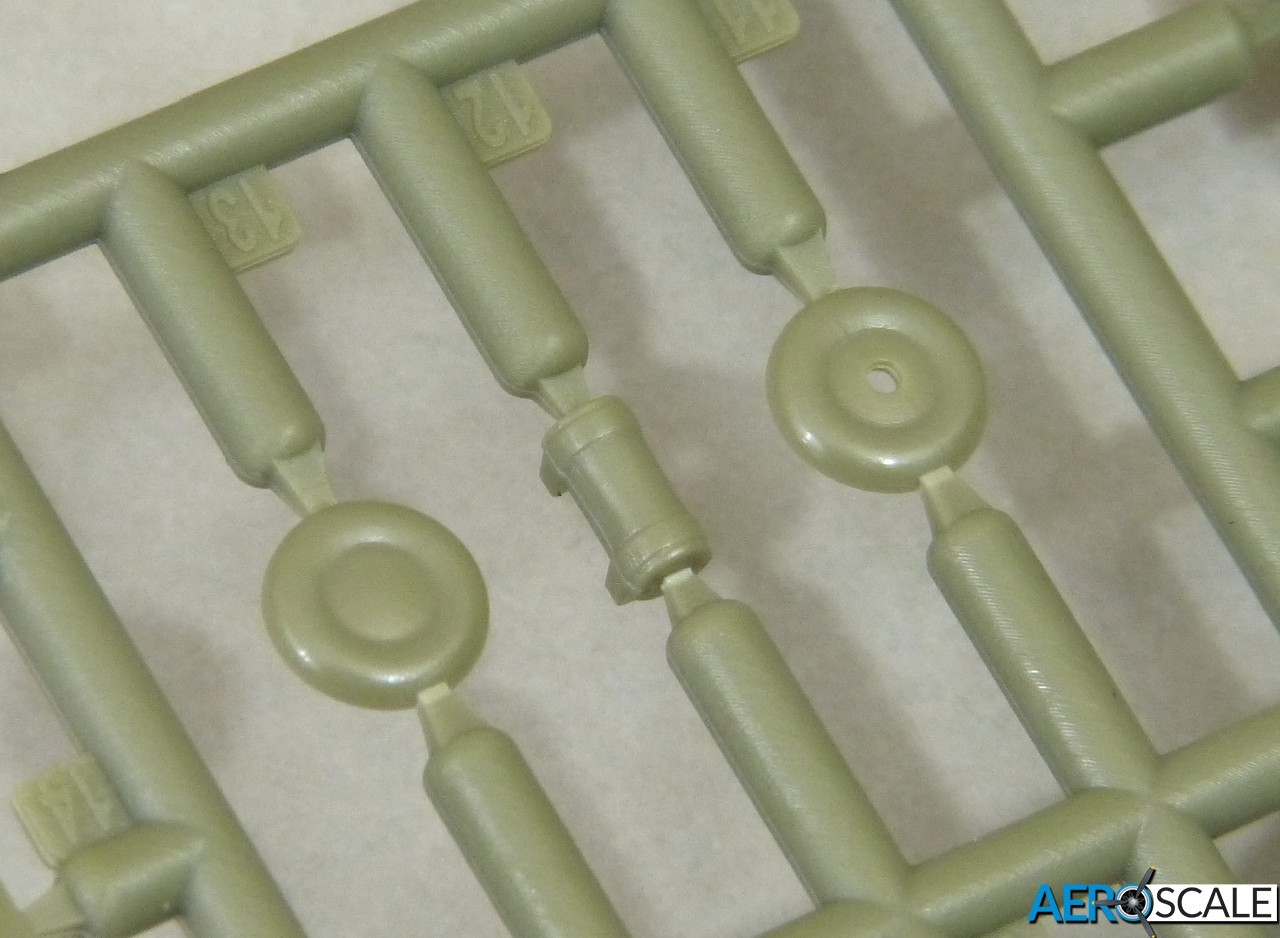
Finally, the kit includes an excellent set of clear parts, plus vinyl canopy masks. There's a choice of rear sections (fully or partly-glazed) and the 3-piece assembly makes it tempting to try to pose the canopy open to further show off the cockpit detail (Note: this might need filing down the rear section due to the thickness of the parts).
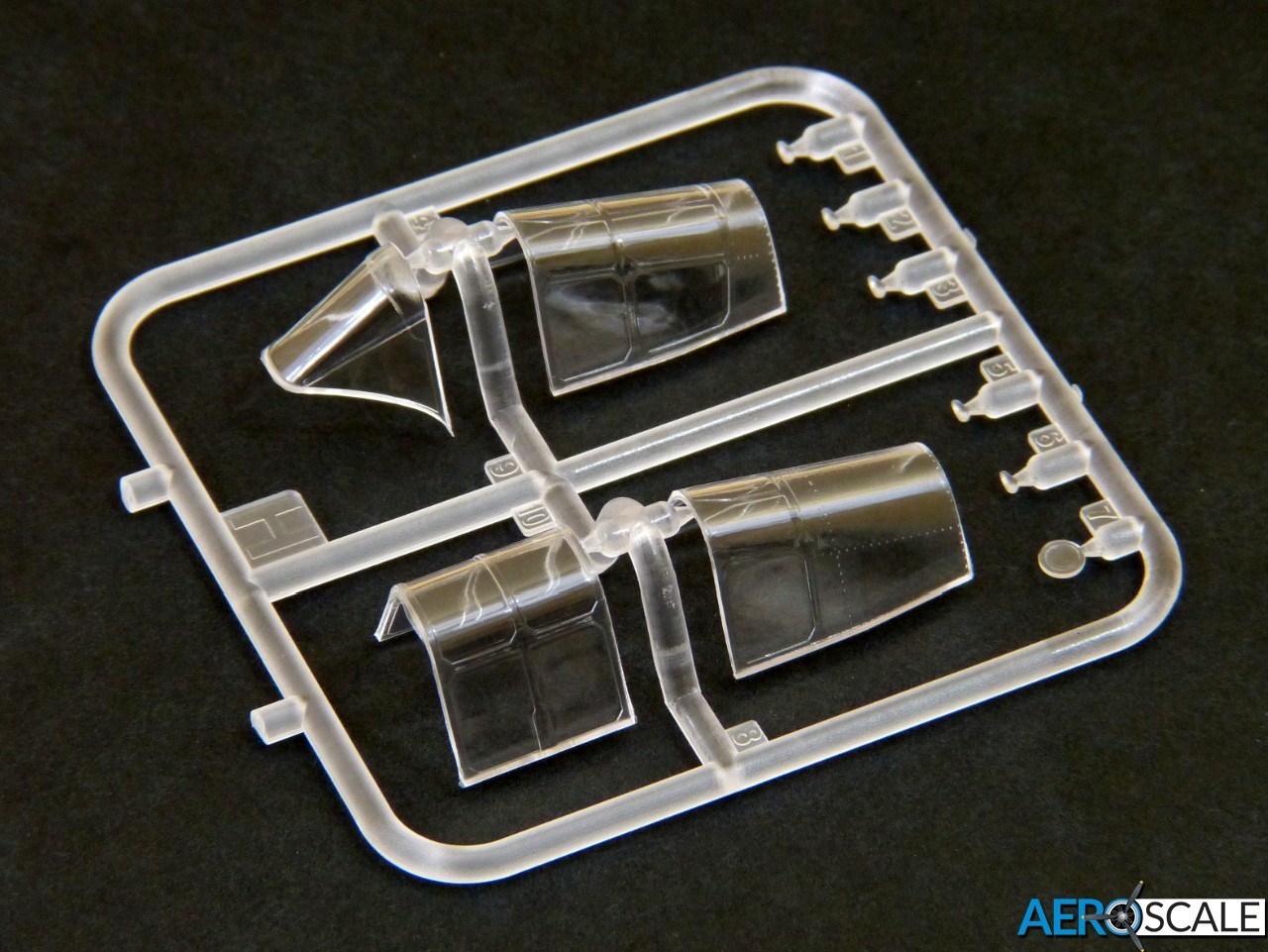
Instructions & Decals
Dora Wings provide a high quality and neatly illustrated A5 16-page booklet that's printed in colour on glossy stock. The assembly diagrams are small, but clear, and the overall suggested sequence is pretty logical - but you can always rely on experienced modellers to choose their own path.
Dora Wings provide colour matches for Mr. Hobby, Tamiya, AMMO MIG, Hataka and LIFEColor, so modellers everywhere should have no trouble finding suitable paints.

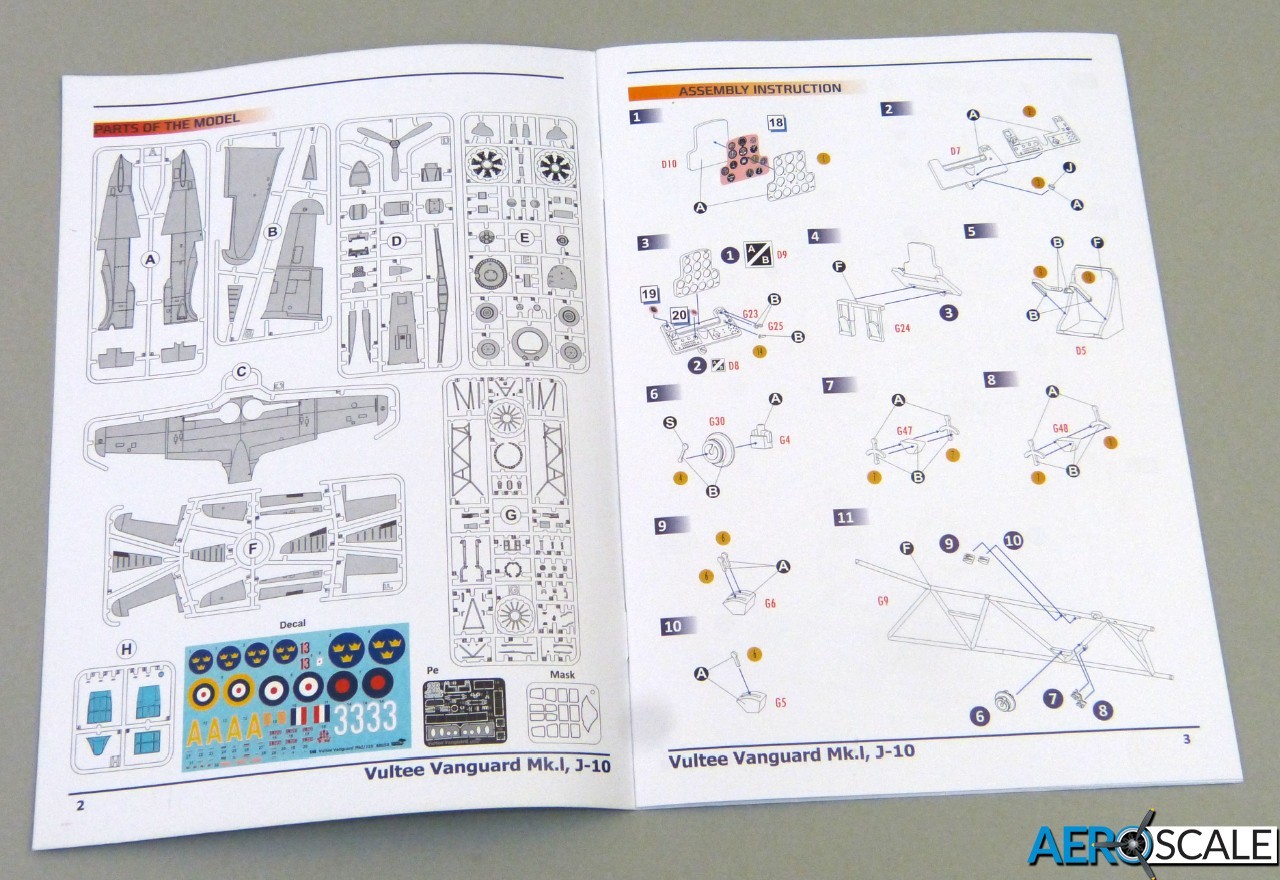

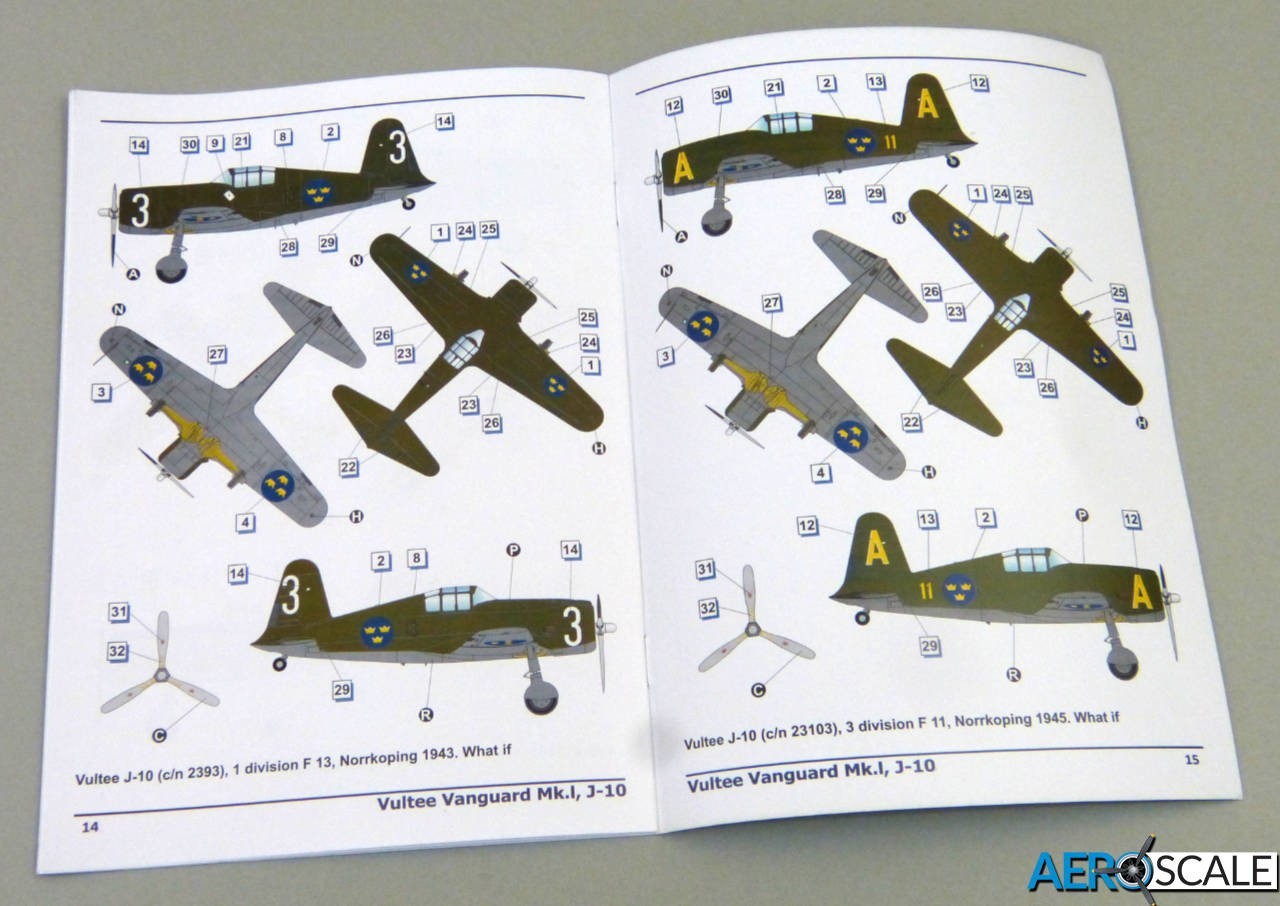
Decals are included for a quartet of colour schemes - two historical and two "what-ifs":
1. Vultee Vanguard Mk.I (c/n 502), California, 1940
2. Vultee J-10 (c/n 501), California, September 1940
3. Vultee J-10 (c/n 2393), 1 Division F13, Norrkoping, 1943 (what-if)
4. Vultee J-10 (c/n 23103), 3 Division F11, Norrkoping, 1945 (what-if)

The decals look excellent - thin and glossy, and printed in pin-sharp register. The colours are solid and vibrant - on that note, the red of the British roundels would be very bright for a machine in RAF service, but it's totally plausible for a factory finished US prototype airframe in 1940. If you go for the Vanguard Mk.I, bear in mind too that it would have been painted in US Dupont colours, approximating but not totally matching RAF standards.
Conclusion
I don't think I've ever been more delighted to receive a sample than when Dora Wings' new Vultee Vanguard arrived! After a nightmare year since the company had to suspend production and trading due to the Russian invasion and their home city of Dnipro came under bombardment, its release represents an astonishing testament to the resilience of the Ukrainian people in the face of such adversity.
And it's a great little kit. While I have to caution that it's not suitable for totally inexperienced modellers with its use of photo-etched parts, experienced builders should have no trouble and will relish the extra challenge. The finished model will be a guaranteed head-turner in any line-up of WWII era fighters.
I always try to remain totally impartial in my reviews, but current circumstances will make me go out on a limb and say just buy one to support Dora Wings as the company gets back on its feet, even if you're not ready to build it just yet! Slava Ukraini!
Item #48050 is available now from Dora Wings - Price: 34.00 Euros
https://dorawings.com/1-48/vultee-vanguard-mk-1-j10
Many thanks to Dora Wings for the review sample.
Please remember, when contacting retailers or manufacturers, to mention that you saw their products highlighted here - on AEROSCALE










